drawing the biosphere
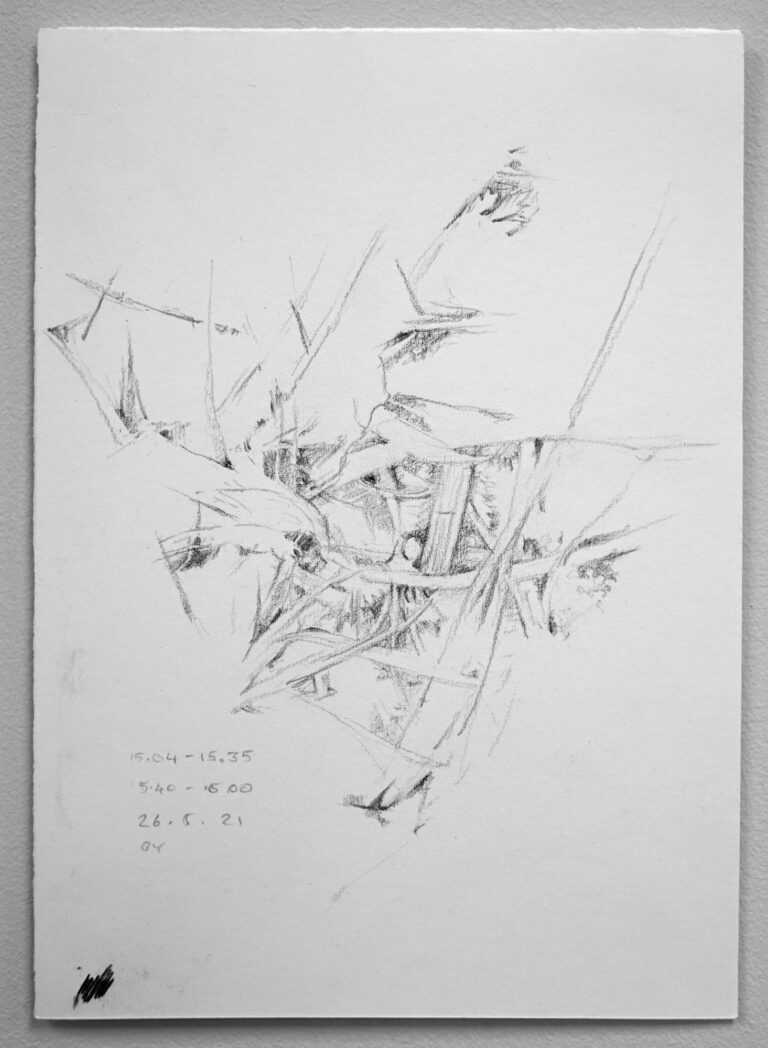


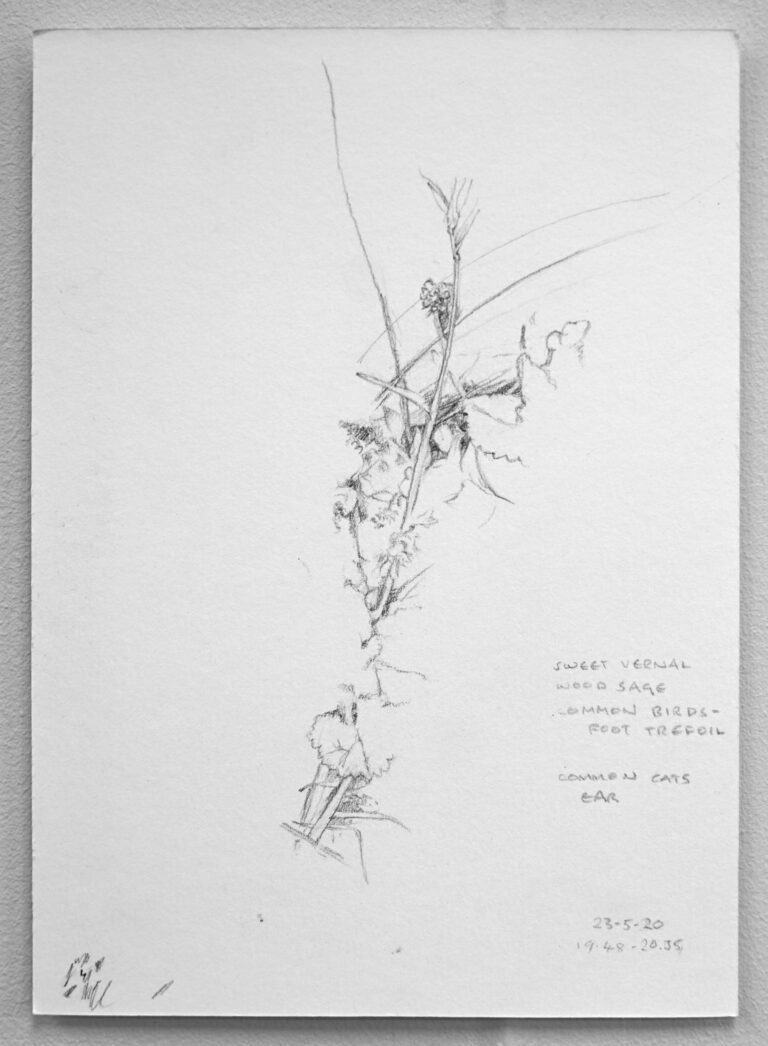
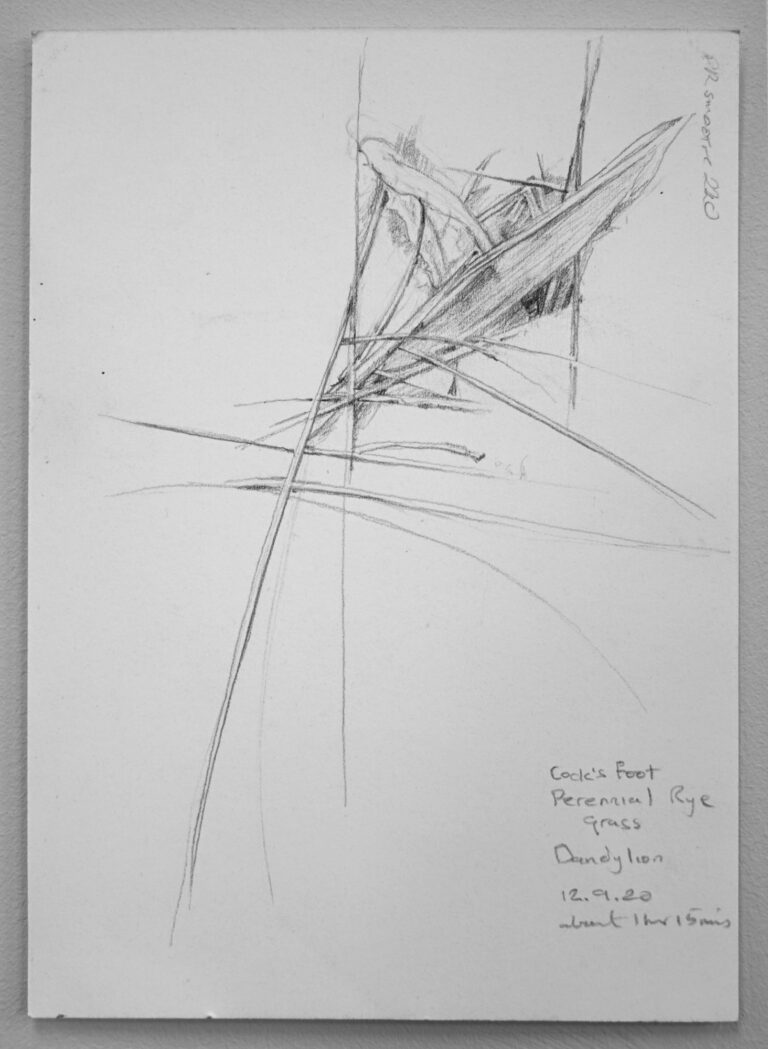
Clump Studies is the term I am using for an enquiry into the manner by which biological entities exist and therefore survive or thrive. It seems self evident that it is the Clump that withstands the harshest of winter conditions and from which emerges physical and temporal qualities such as porosity and elasticity. The drawings are close studies of complex ecosystems at a small scale.
Sensing and observing are profound acts of being alive, their scope is much more than human, much more than animal; which makes me question what it is to be a sensing human subject. The human body is material and its form has emerged through 3.7 billion years of planetary evolution. I can deduce from this that I am a biological entity, I am ‘inside’ ecology. Indeed perhaps all human culture is inside ecology.
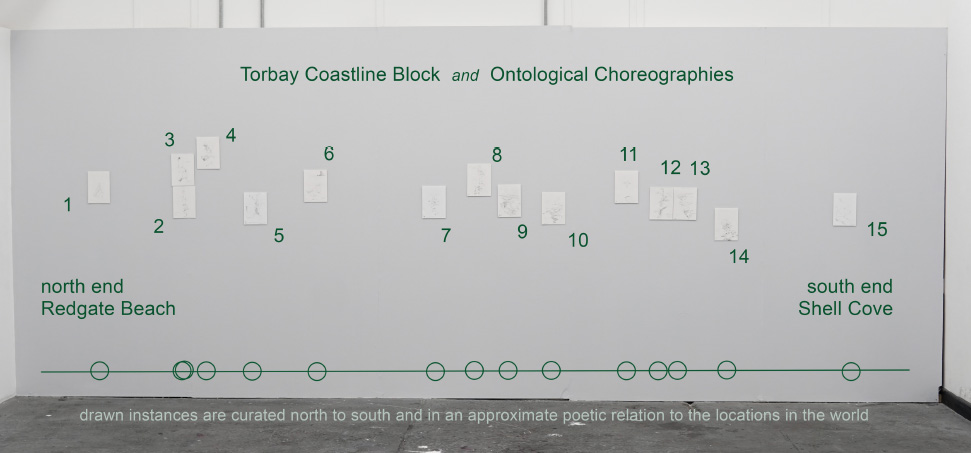
Ontological Choreographies – Torbay Coastline Block, January 2020 to April 2021. 540x165cm. Charcoal on Paper on painted chipboard. Fifteen drawings of Torbay Coastline, each one an instance of discovery and joy. Historically the ‘humanities’ has not included the animal in its paradigm (Braidotti, 2013 Haraway, 2016). A declaration of self as animal de-aligns my ‘self’ from the humanist and idealist traditions and locates my practice in the post-humanities or the “humusities” (Haraway, 2016), in the practices of becoming (Deleuze and Guattari, 1987), and in the politics of eco-commoning (Puig de la Bellacasa and Papadopoulos, 2018).
Observational drawing practice transposes this ‘biotic’ condition into the artefacts.
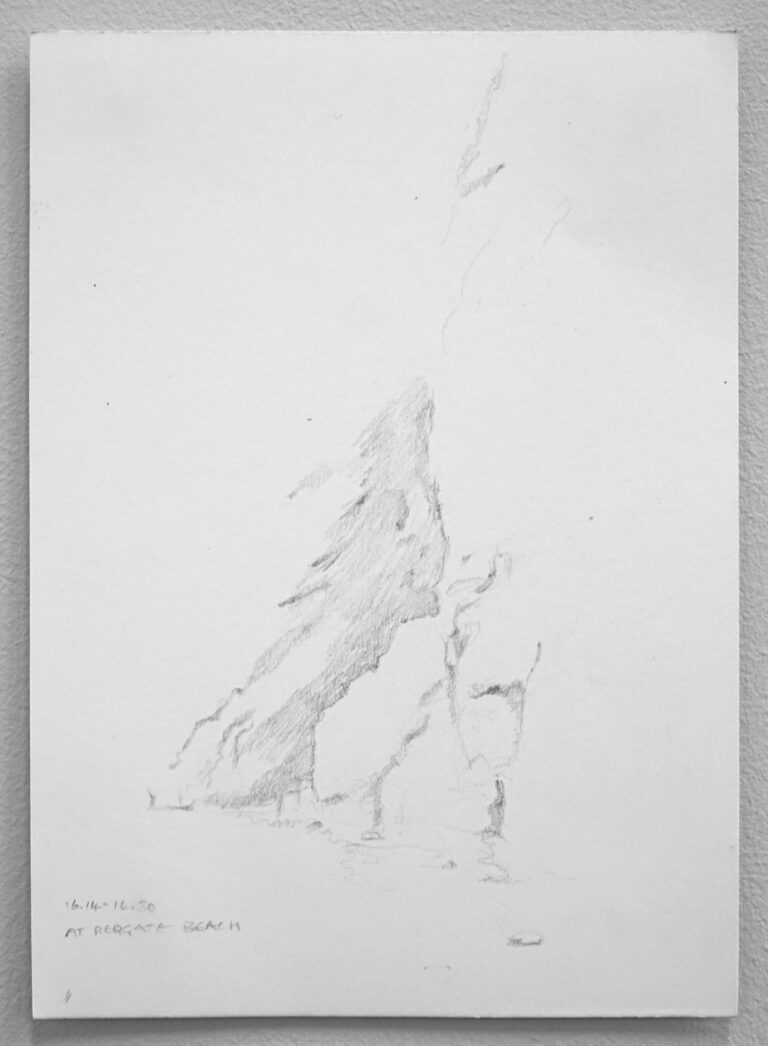
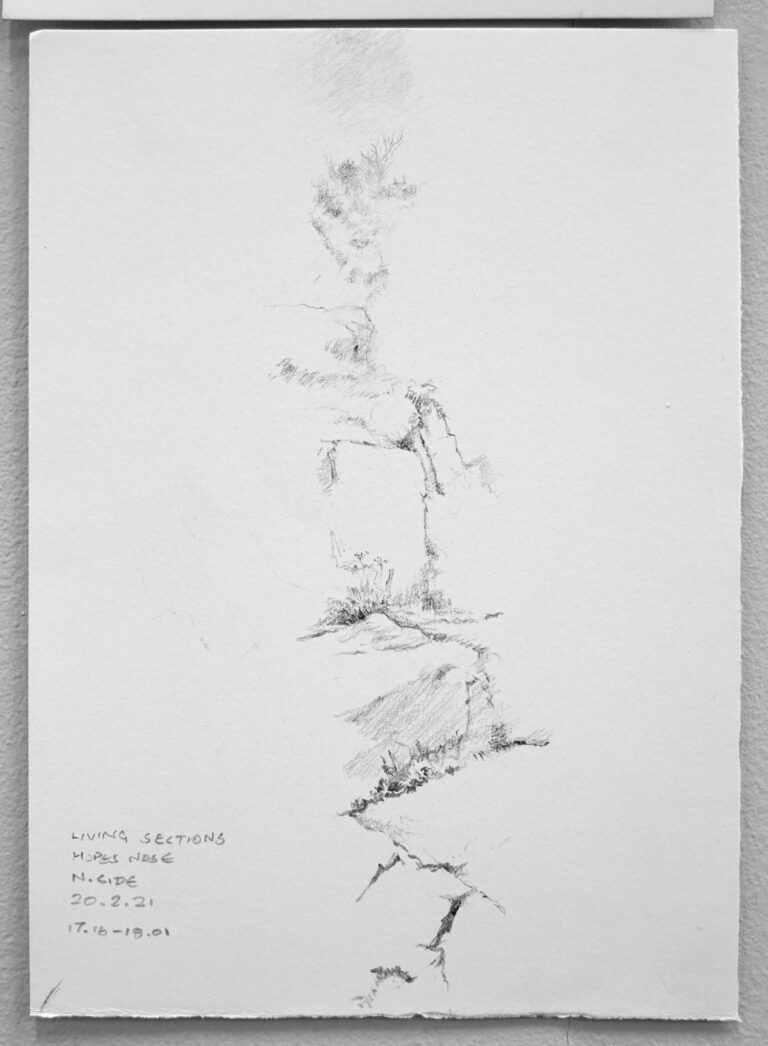
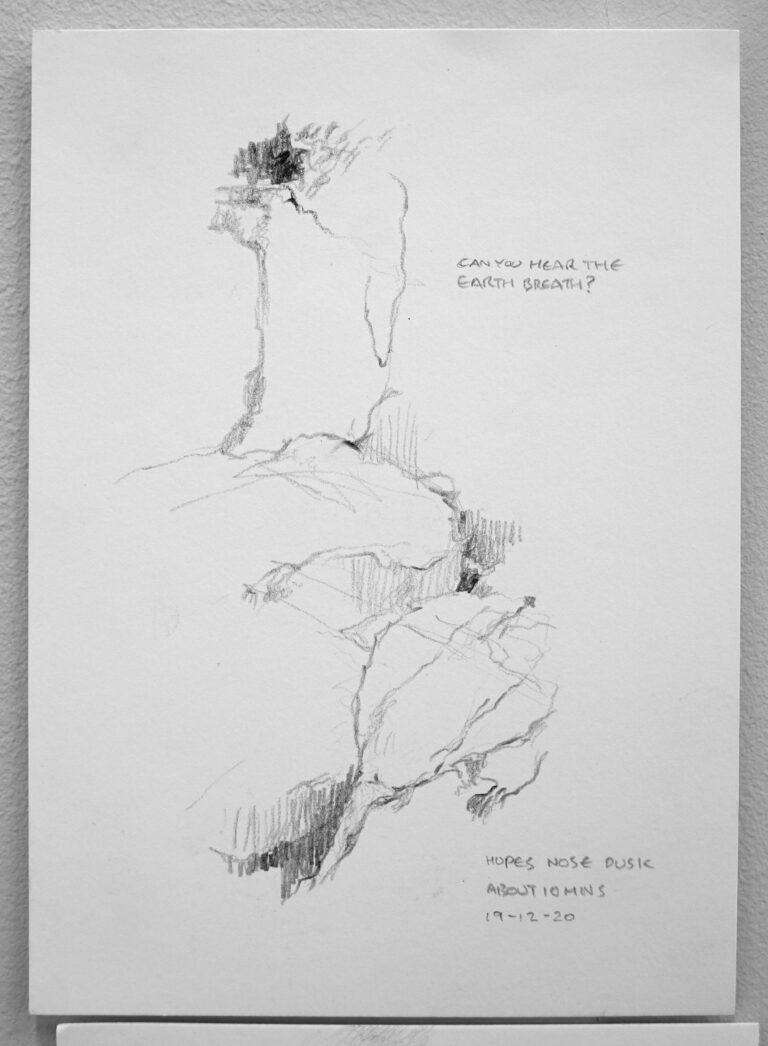
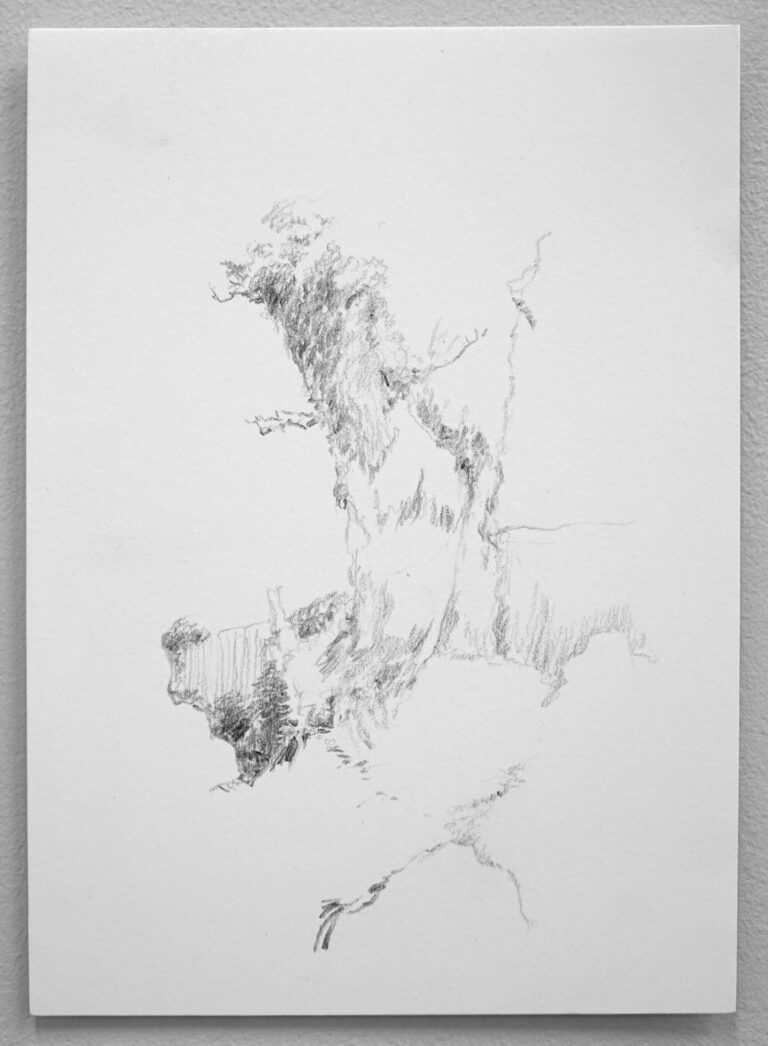
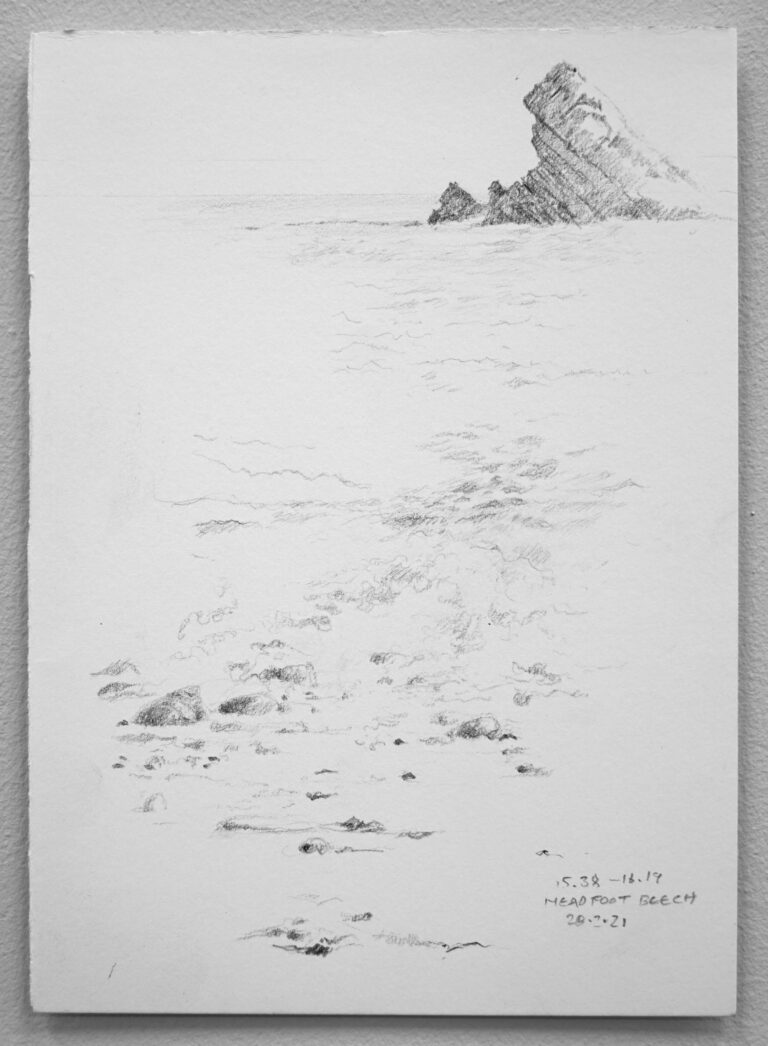
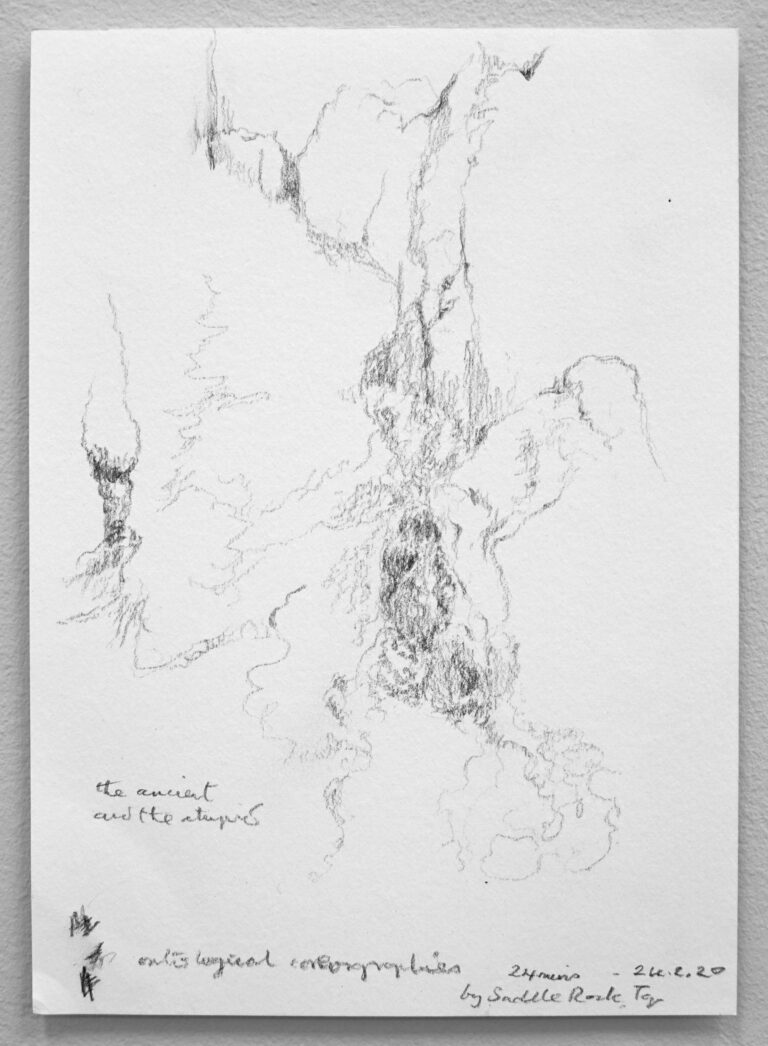
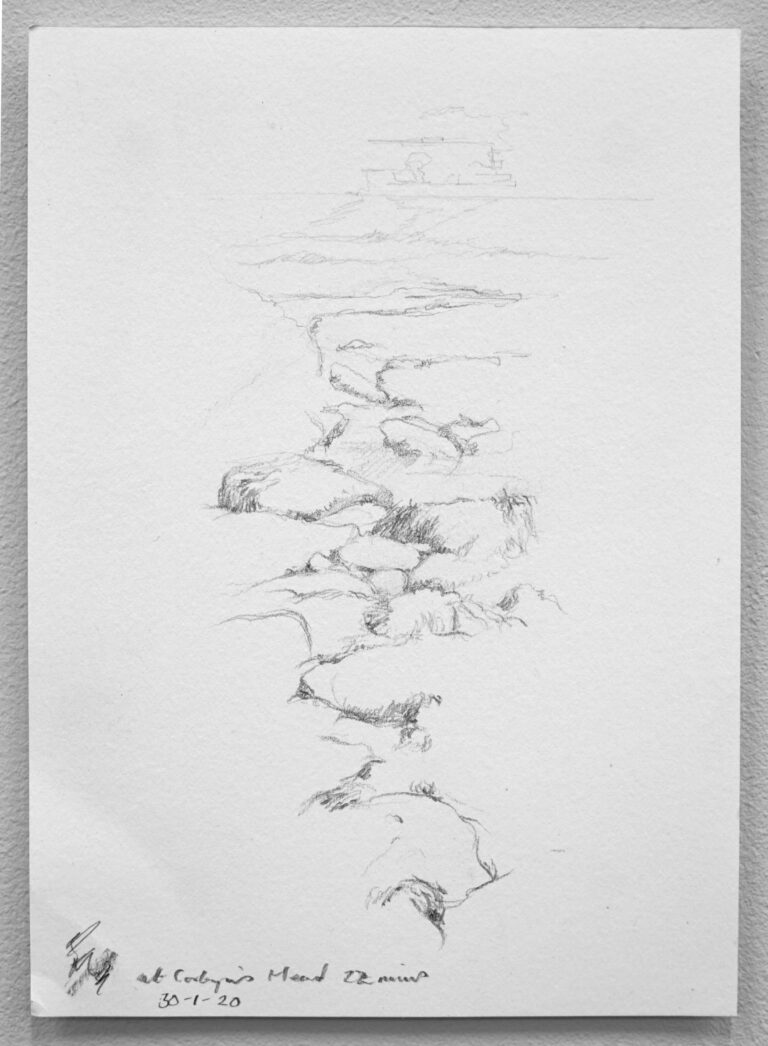
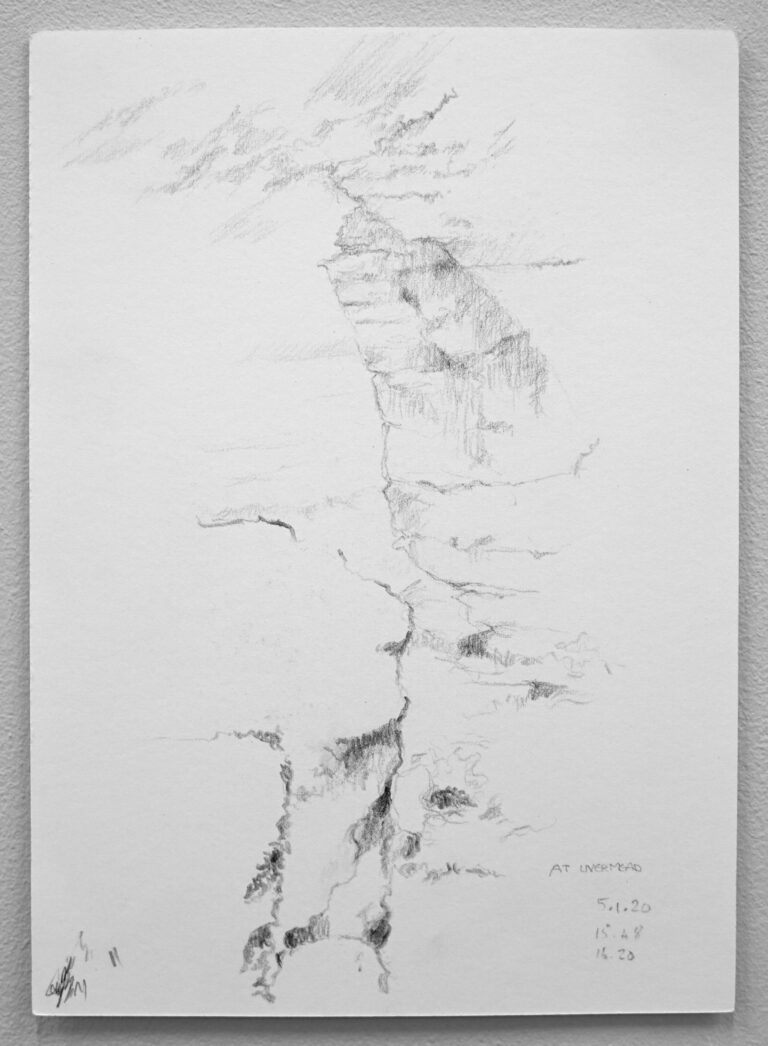
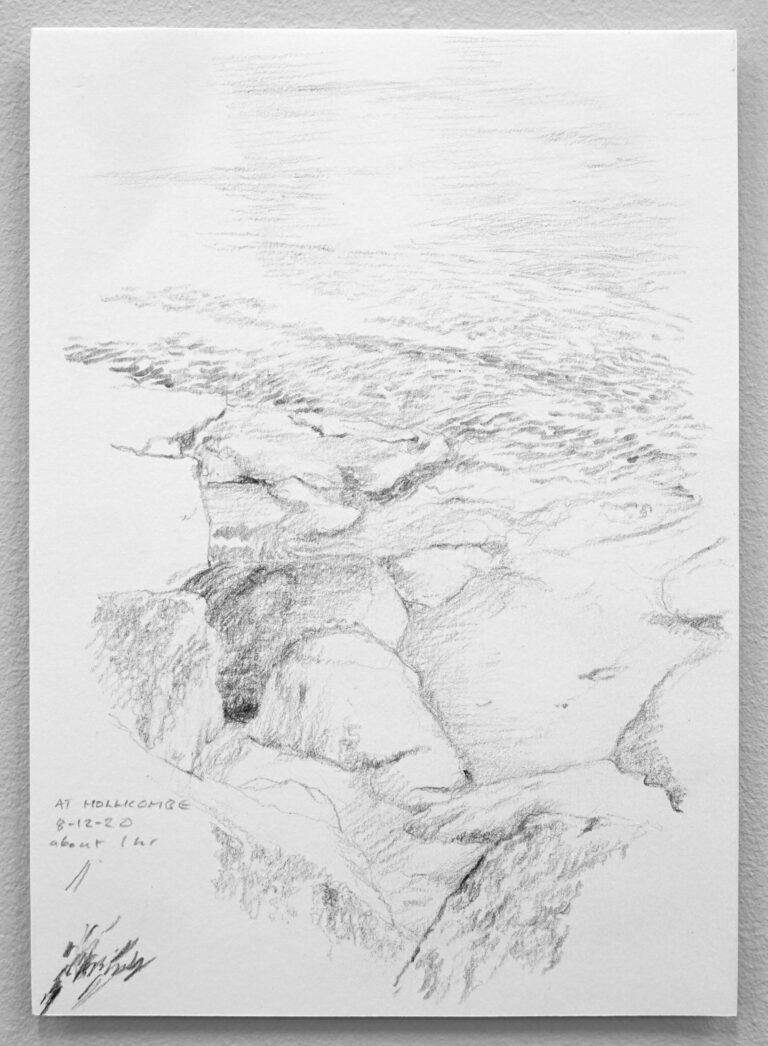
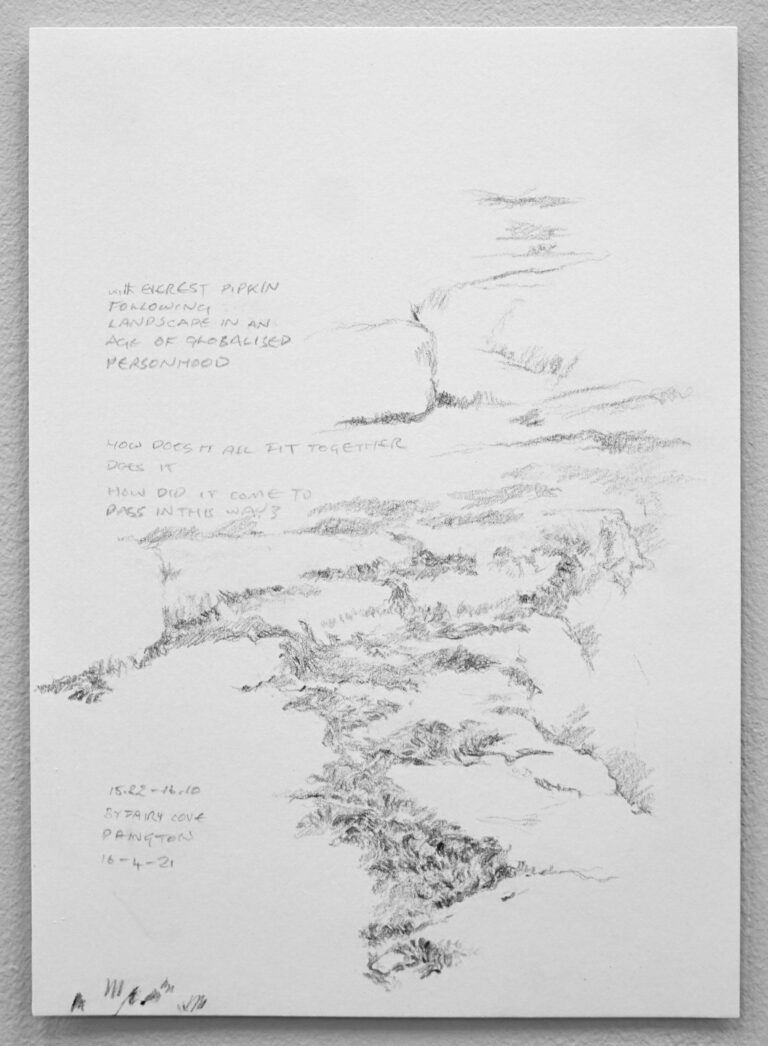
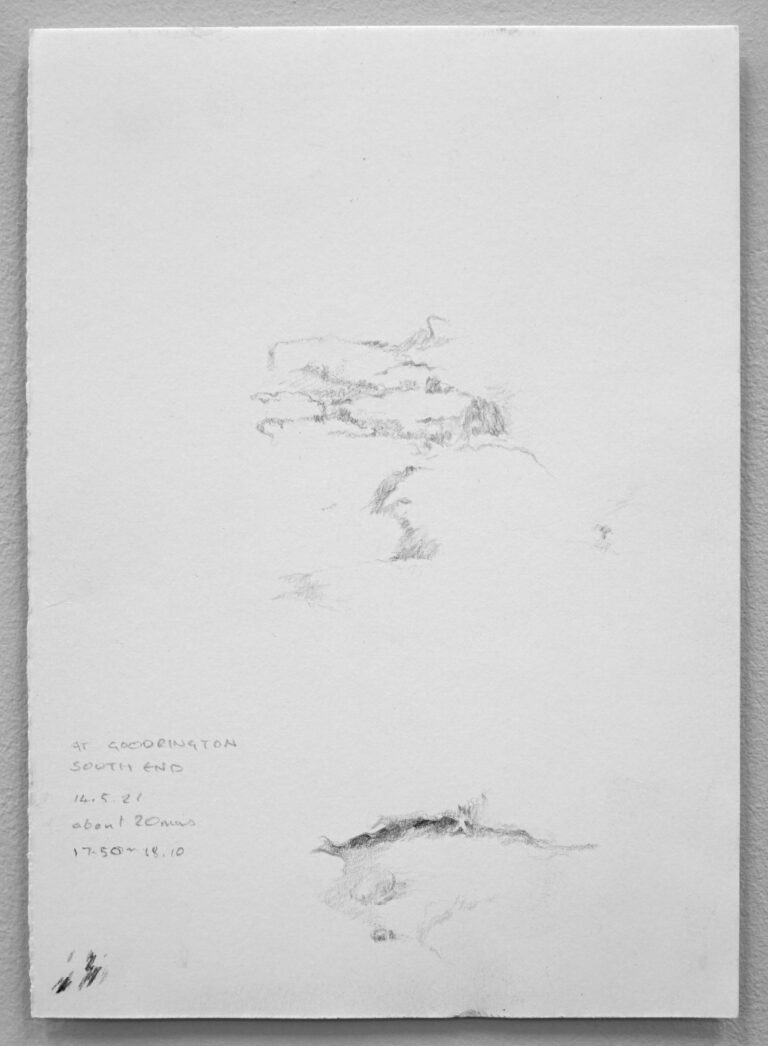
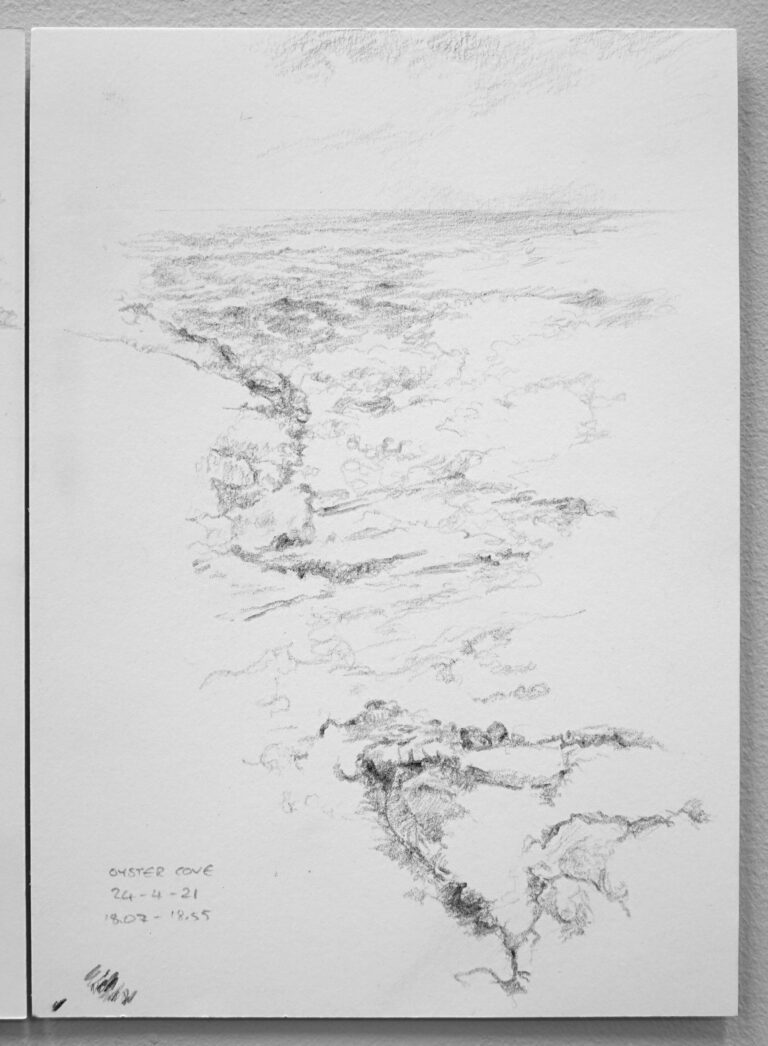

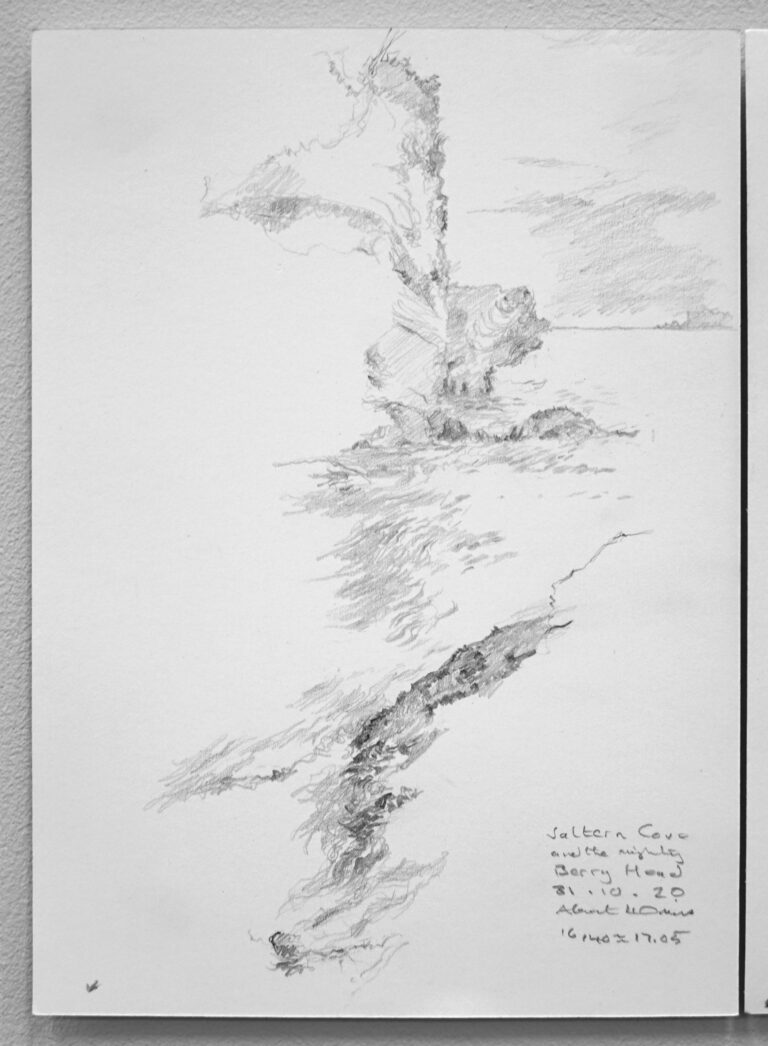
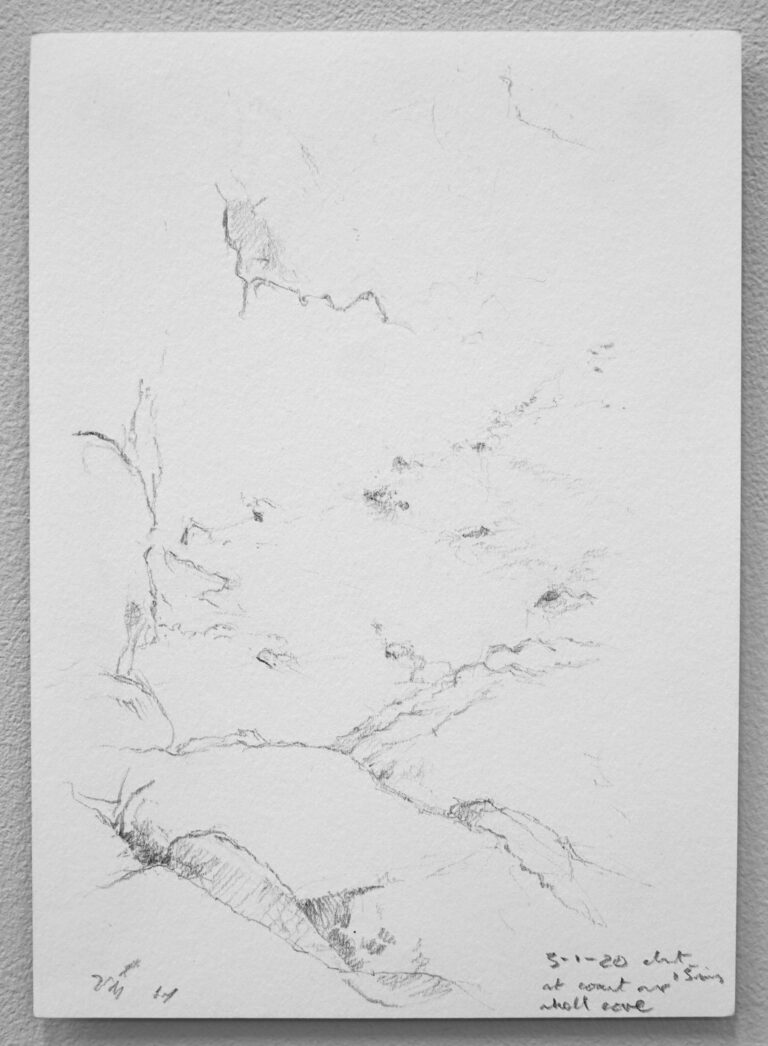
The drawings above appear unformed or incomplete because they emerge from a relation to ‘other’ more-than-human subjectivities. Thus formal concerns arise in relation to more-than-human aesthetics. They begin an ecological aesthetics.
Another title for the above block of drawings is ‘Living Sections – Coast’. It is an art-living-research-practice through which I have come to apprehend the Torbay coastline, including all people and plants, the sea and atmosphere; those in the water, rock and flesh as kin, as alike. (Haraway, 2016 and Deleuze and Guattari, 1987). I experience myself as part of complex geo-ecological assemblages which have extended durations, up to 400 million years in the case of Torbay Limestone, which constitute the ‘thick present’ (Haraway, 2016).
The drawings are all made ‘in the field’. So, in another idiom, each is a record of time spent, not a sketch but evidence of a specific human-world interface. You could think of them as transcripts of “deep hanging out” (Kohn, 2015).Time spent with kindred spirits of sea and coast, forest and grassland, is a methodology, a more-than-human anthropology.
I understand the contraction but suggest ‘we’ need to reach out towards the ‘other’ and recognise the otherness we carry within.
from Care to Passion to Knowledge and back ..
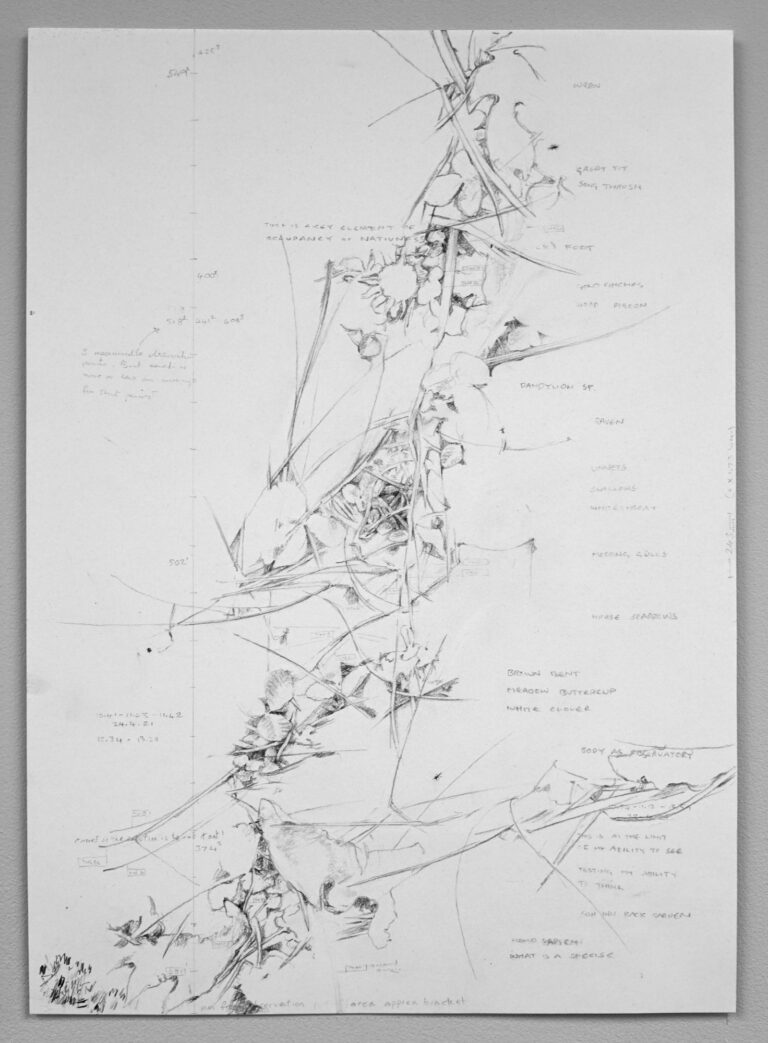
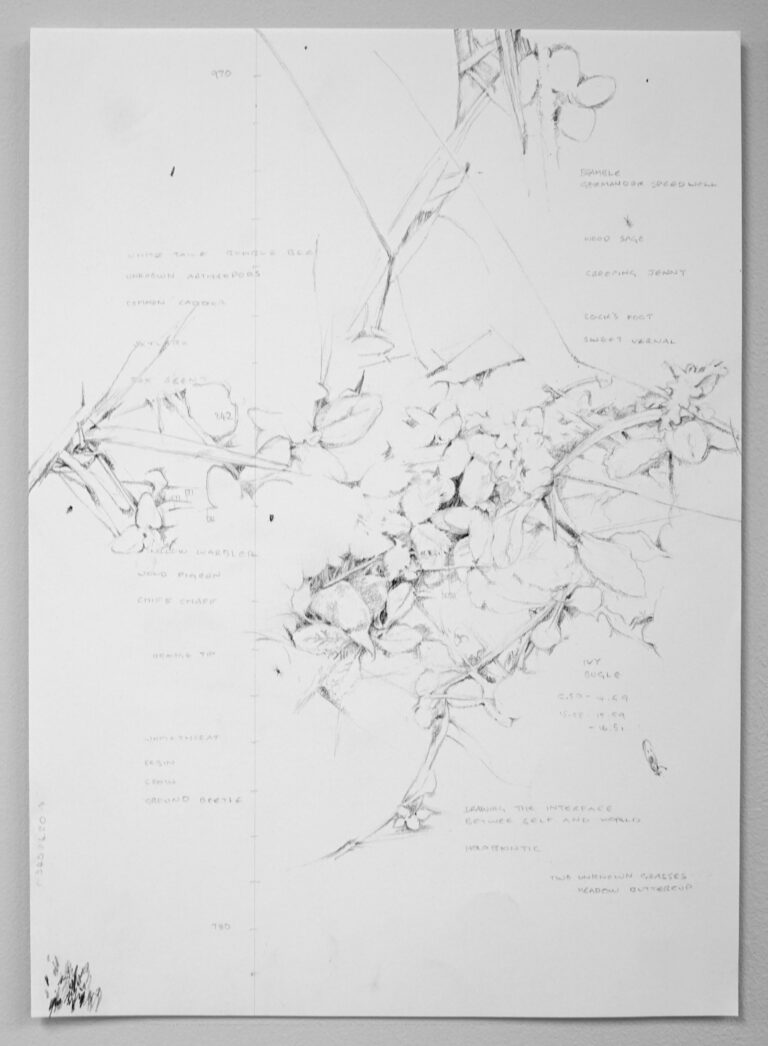
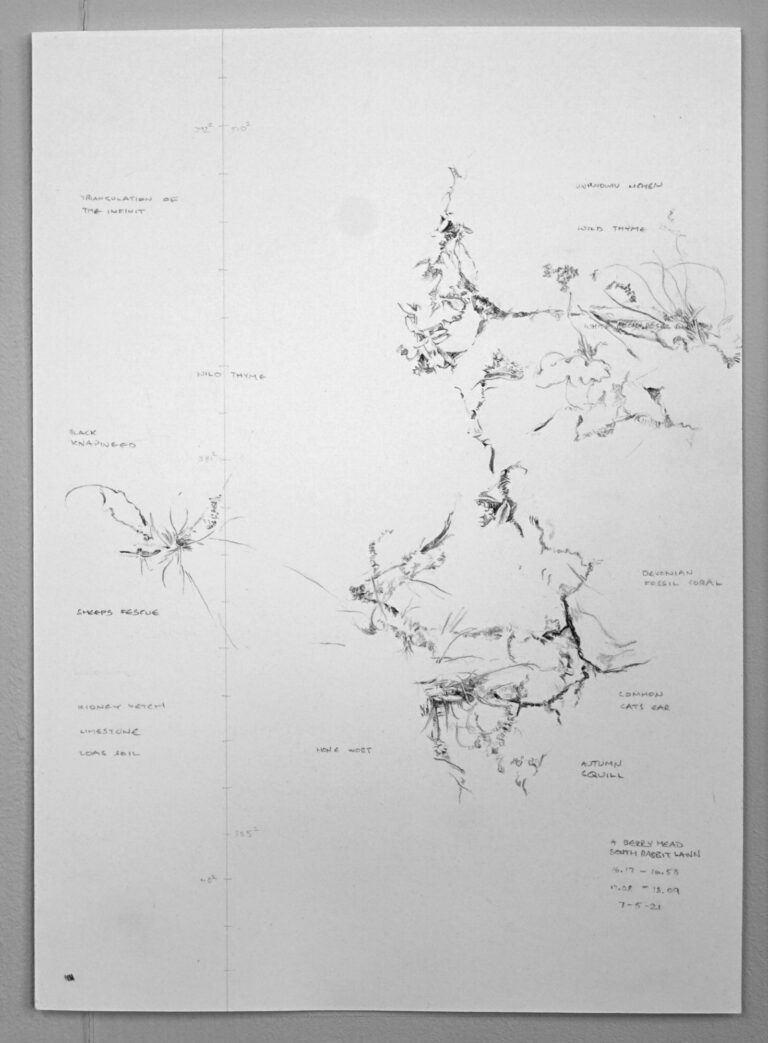
Clump Studies works above I am equally present to grasses and other organisms as I am to the spaces between them, which, as a whole manifests the form by which life is perpetuated. Life in this conception emerges as a poly-genomic entity colloquially called a Clump, it is arguably the unit of living, an idea that challenges the species, the individual or cell as such. An idea that runs counter to the normative idea that monadic species and individuals are competing against each other in the struggle for survival (the modern synthesis). The clump entity is something Margulis (1991) would recognise – a holobiont in which species are co-evolving as consortia (Gilbert, 2012).

I have an enduring interest in the problem of observation. Across art and science almost every discipline requires an outward-looking element upon which to build and reflect. But drawing, in one very significant way is different: observational drawing exists within observation, not as a result of it. What is observable, in a way, brings things into the field of the known, or at least the potential to be known. I am interested in the thought that what is yet to be know is present all around us in the known, the familiar, the intimate and everyday. Thus an enduring aspiration for my art practice is to reveal the yet-to-be-known through an intensified and sometimes augmented observation of ‘ordinary’ things. Currently I am exploring associative compositional forms, in which what is noticed / observed is given priority over perspective. I am being influenced by C16 ink drawings by Kaihō Yūshō, where witten text and drawn marks exist in a unified aesthetic space. I am interested to conceive of drawing as ‘data’. For the artworks to function in this way I produce works in series, often considering series’ of works as one work. I borrow aspects of methodologies from social science, biology and ecology to produce aesthetic conceptual spaces that stimulate novel readings. These series’ of works also function to create a miniature discourse around certain phenomena. Works can be read in relation to one another, meaning is established relative to the difference, similarity or repetitiveness of the artworks within the series.
BGS 350 - The Torbay Urban Geology Residency
BGS350 is the sheet number The British Geological Survey printed map of Torbay. Torbay’s sea-line cuts a fine section through the geology, its movements in the last 45,000 years track periods dramatic climate instability and relative calm. The sea-line has had a defining influence on human occupancy. In this thought the project gained its frame, the five meter contour: “a line on a map joining points of equal height above or below sea level.” Lying deep in the project are questions about knowledge and belonging: can geology change our perception of place and environment? What would be different if we had a clearer picture of the events that have formed the land we call home?

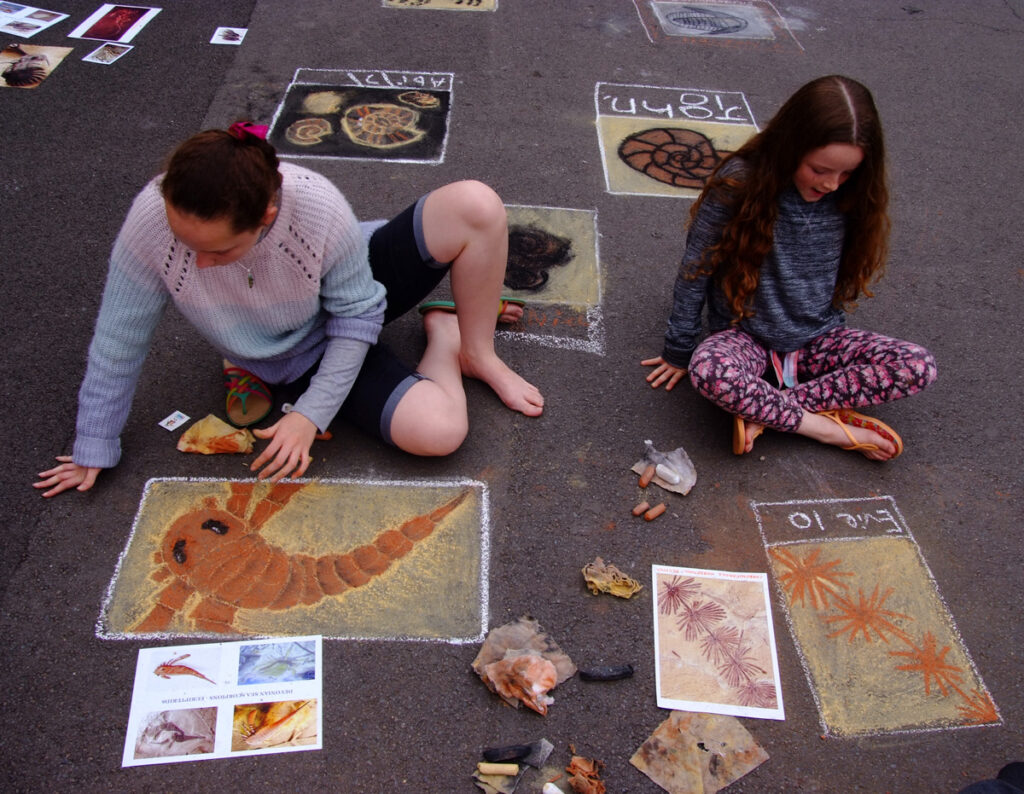

Fossil drawing workshop days at Torre Abbey
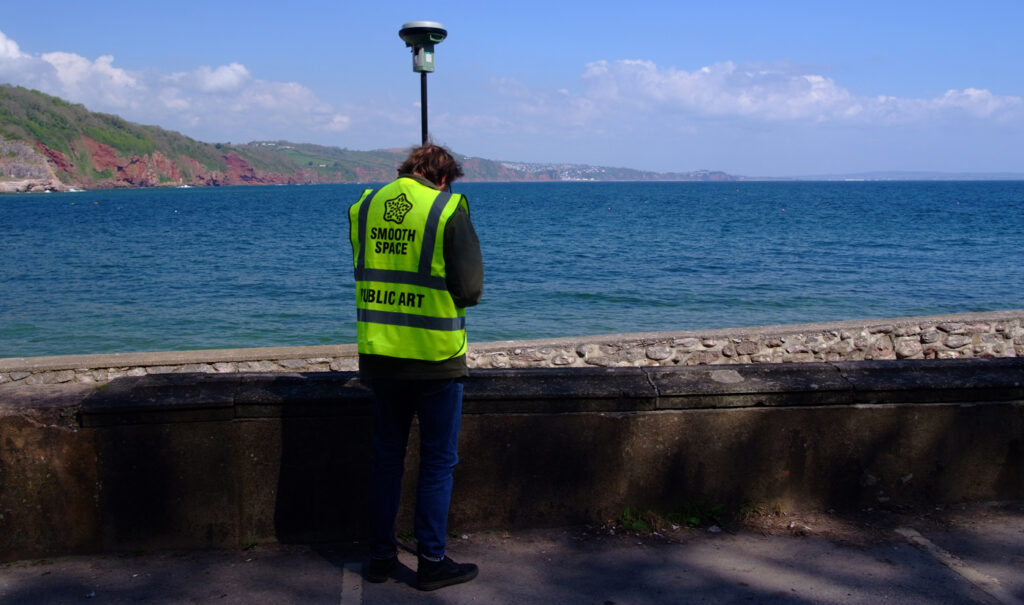
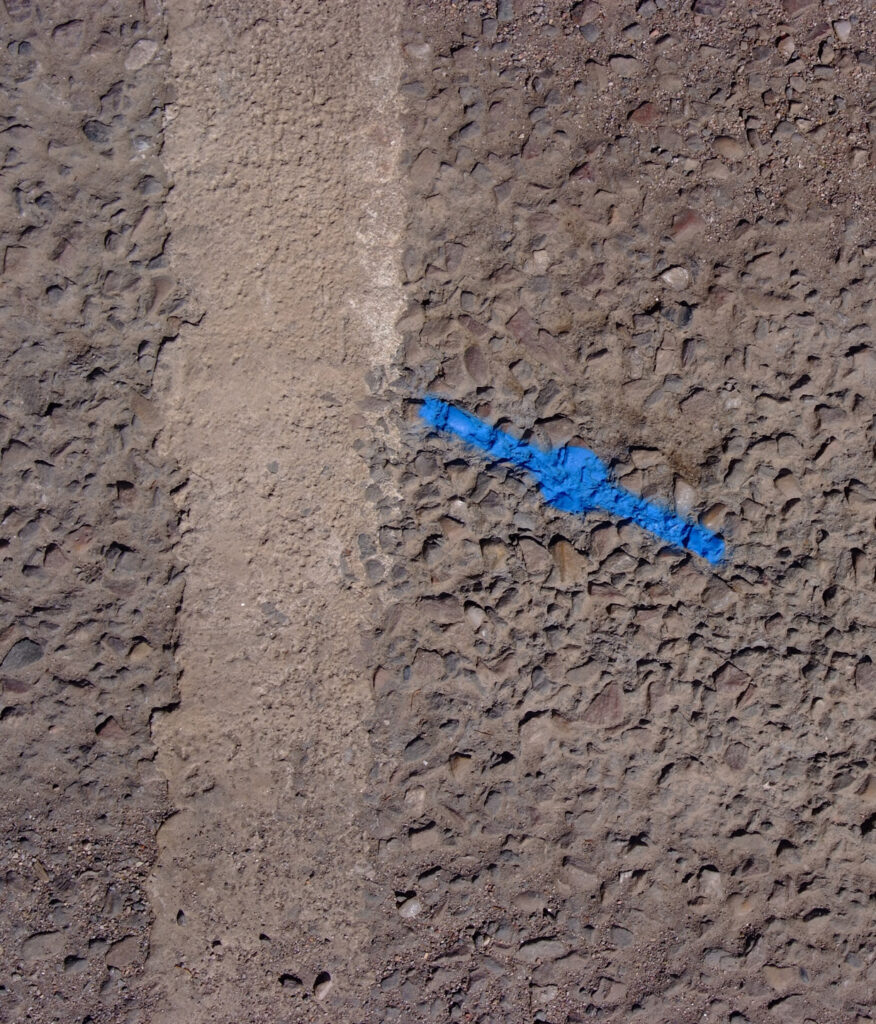
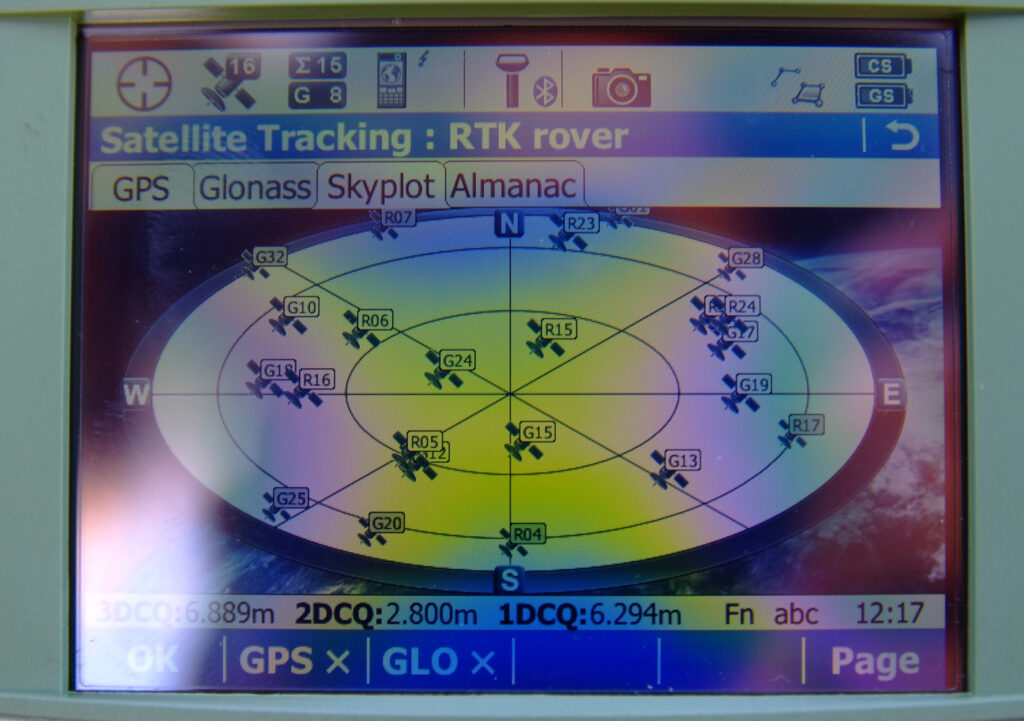
Surveying days. To create a novel data figure as public performance.
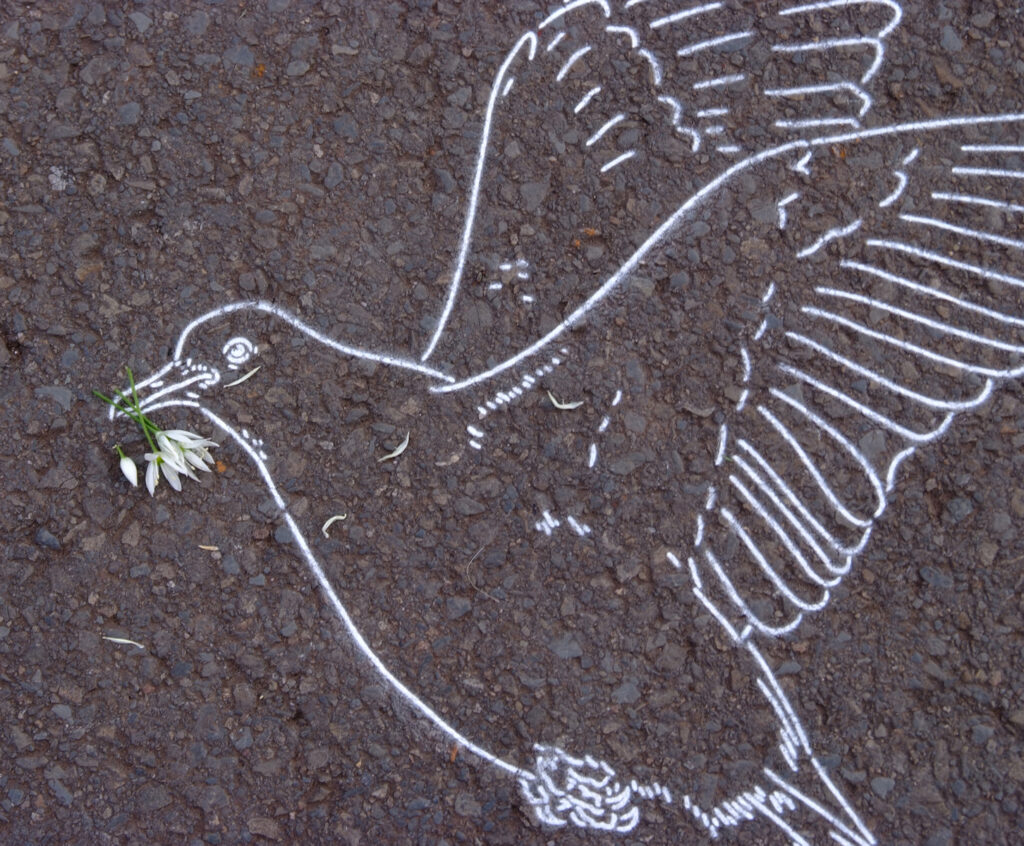
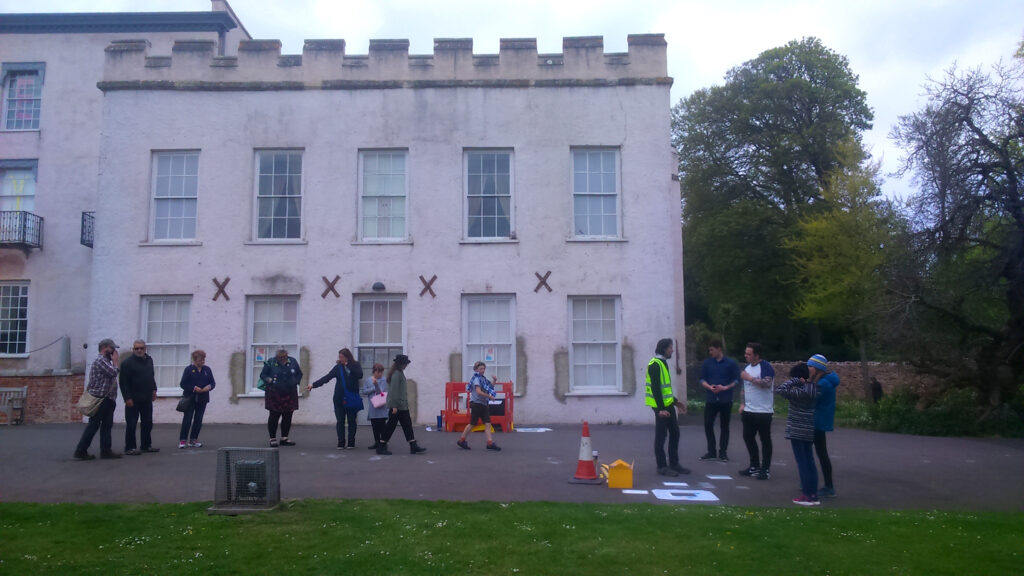

Above. First public installation peformace day. Torre Abbey.
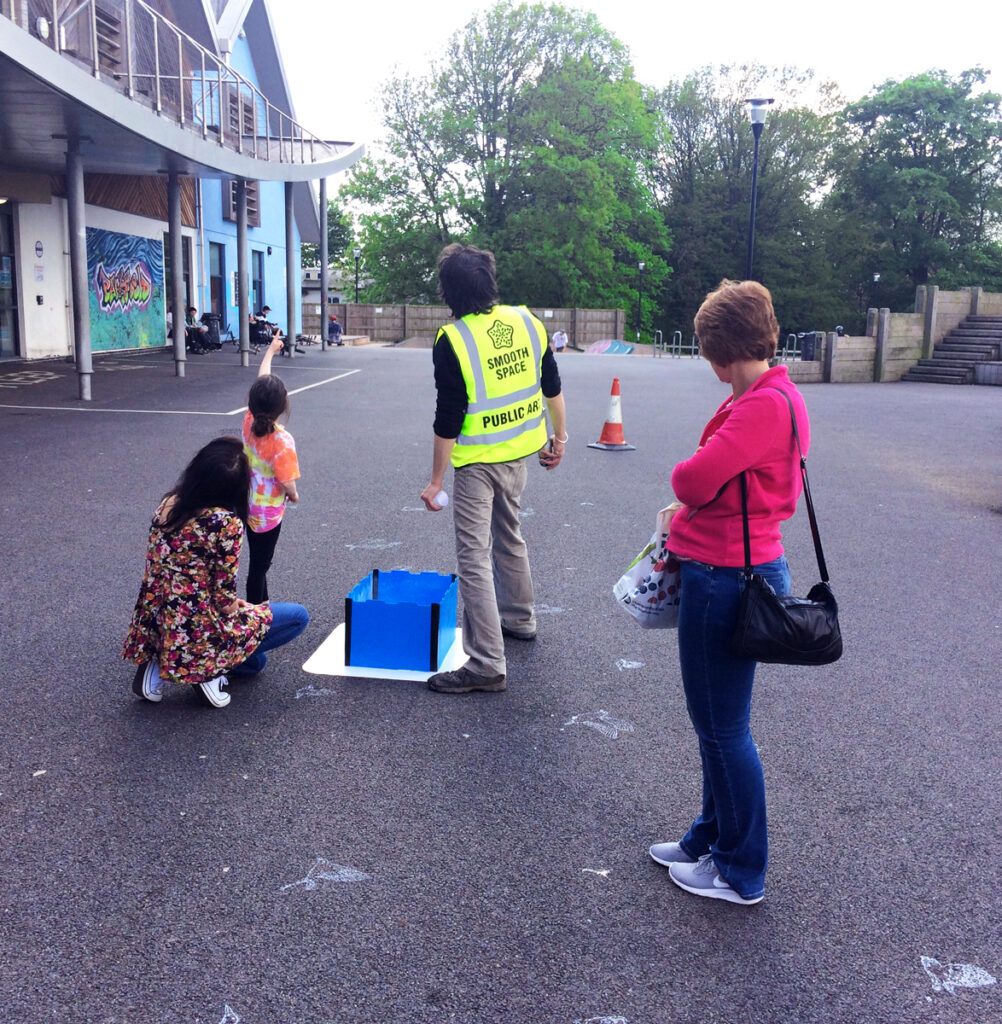
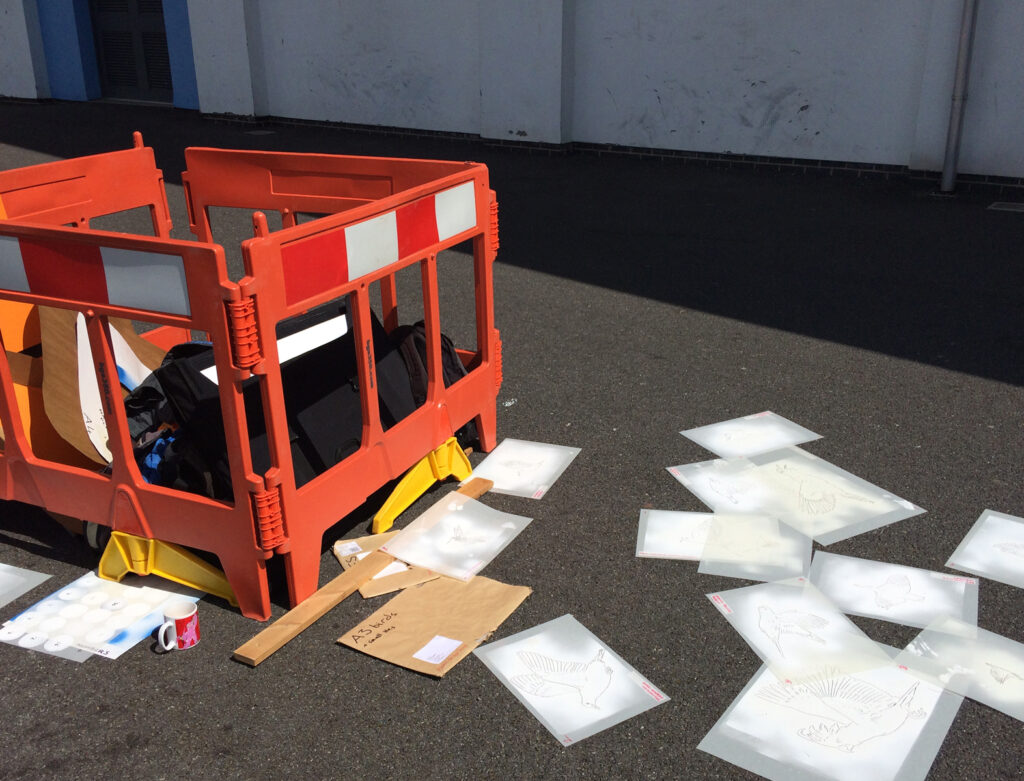
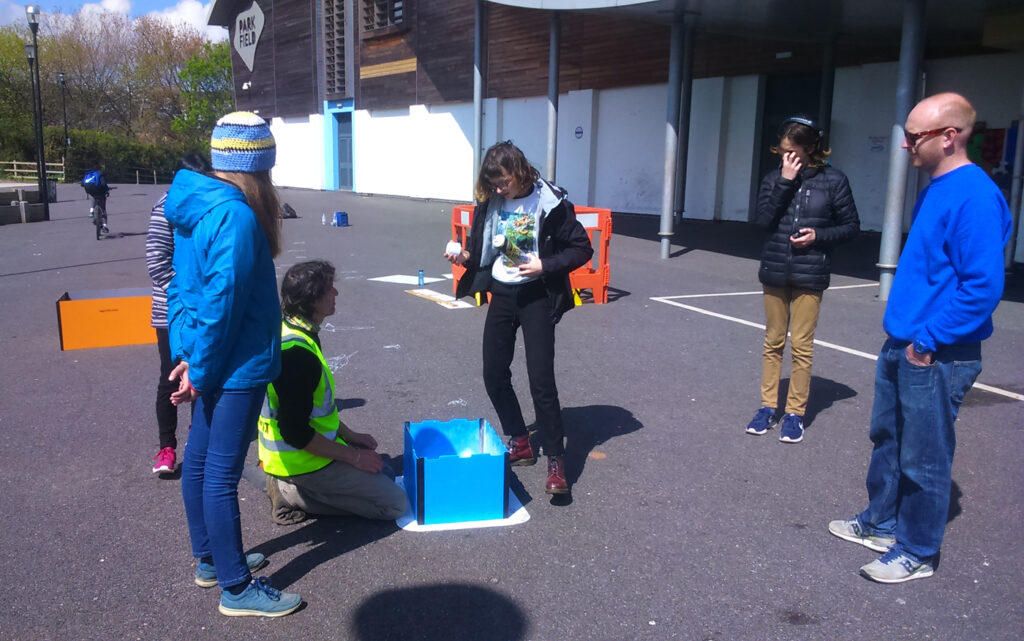
Above. Second public installation peformace day. Parkfield Youth an Community Centre.

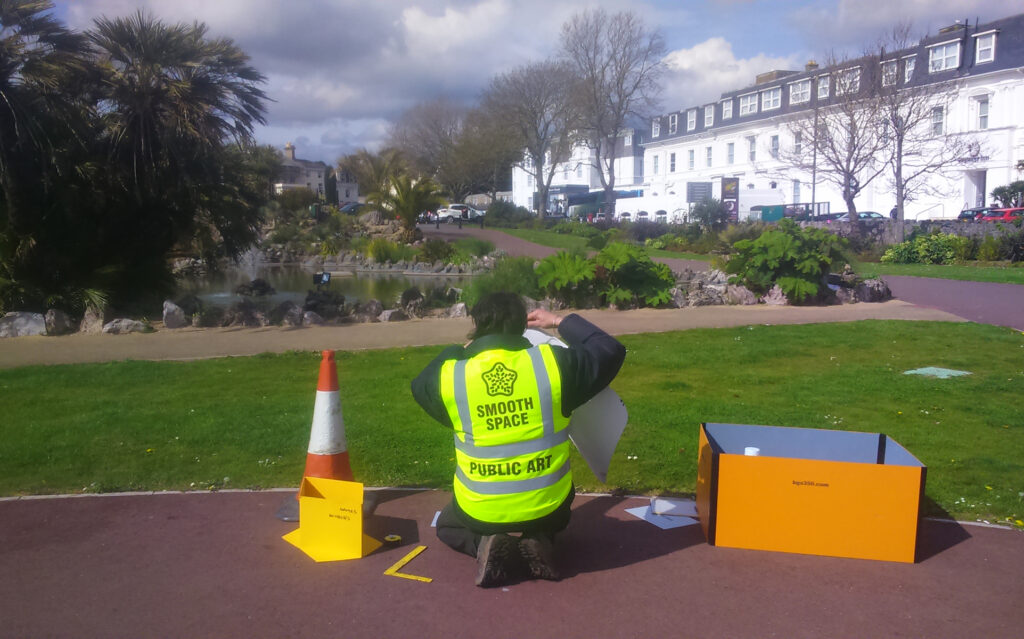
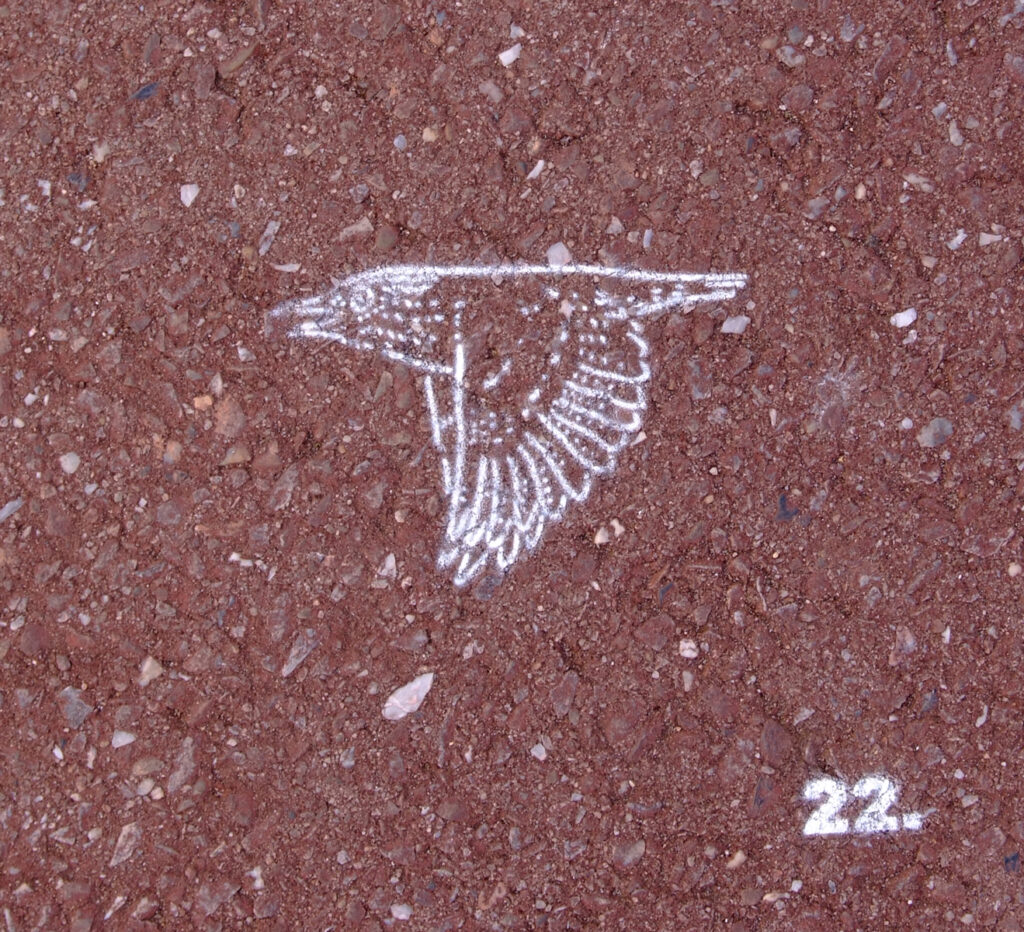
Above. Third public installation peformace day. Torre Abbey Gardens.
Smooth Space Peer Review Group
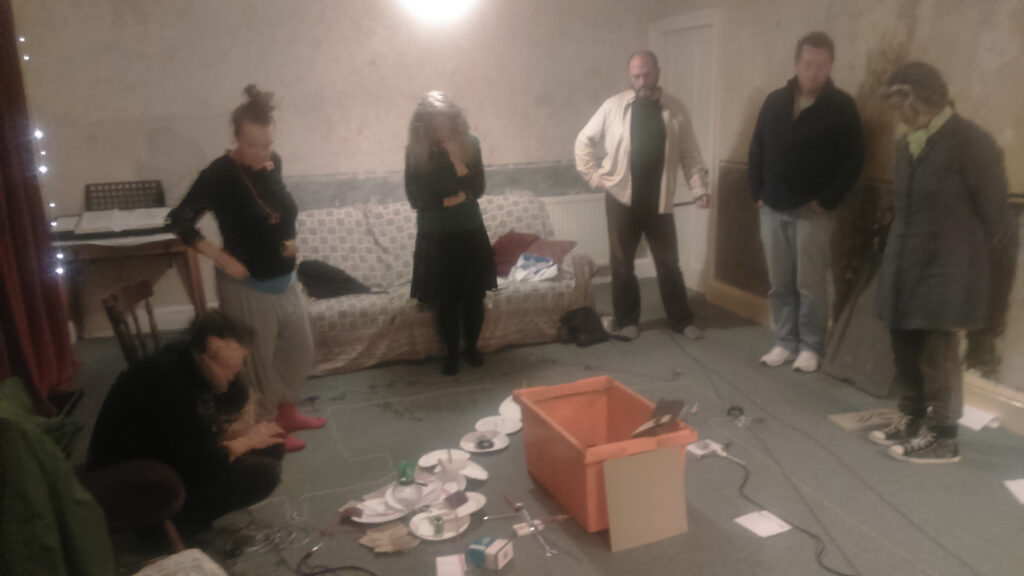
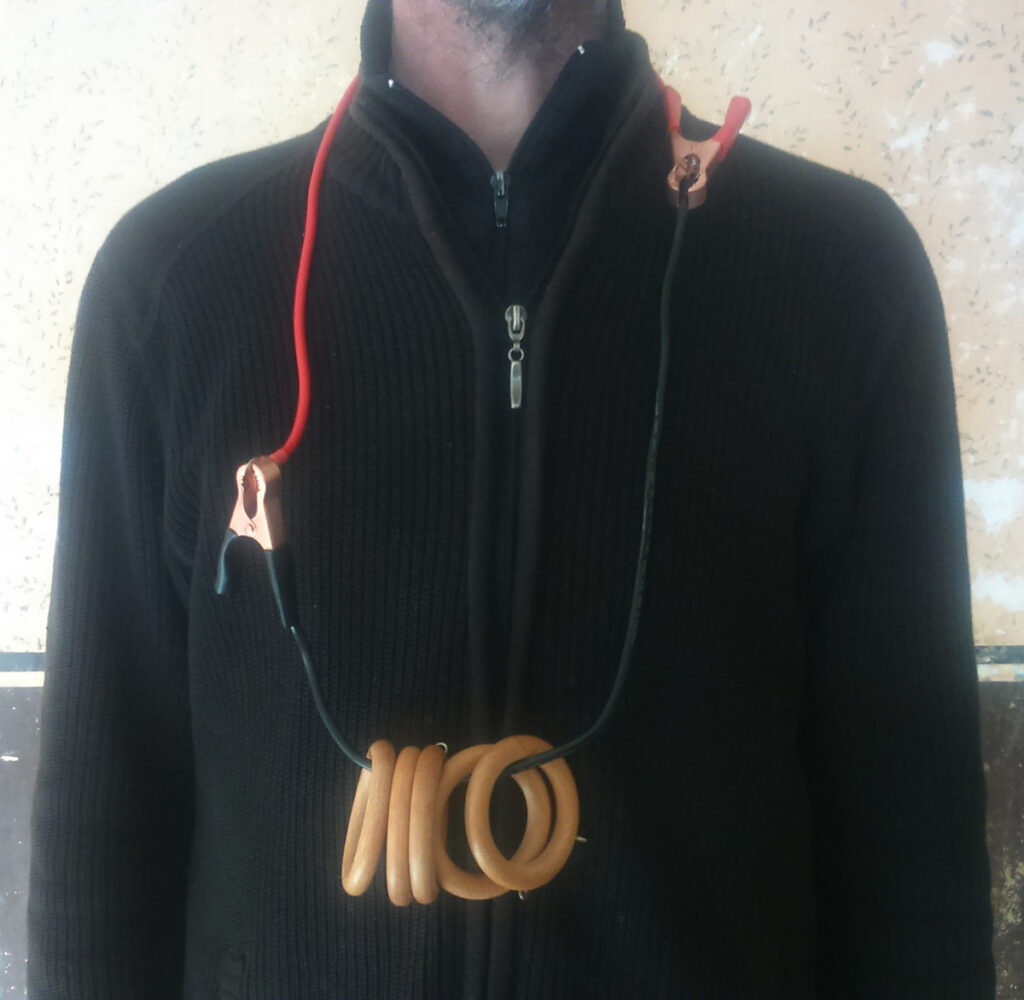
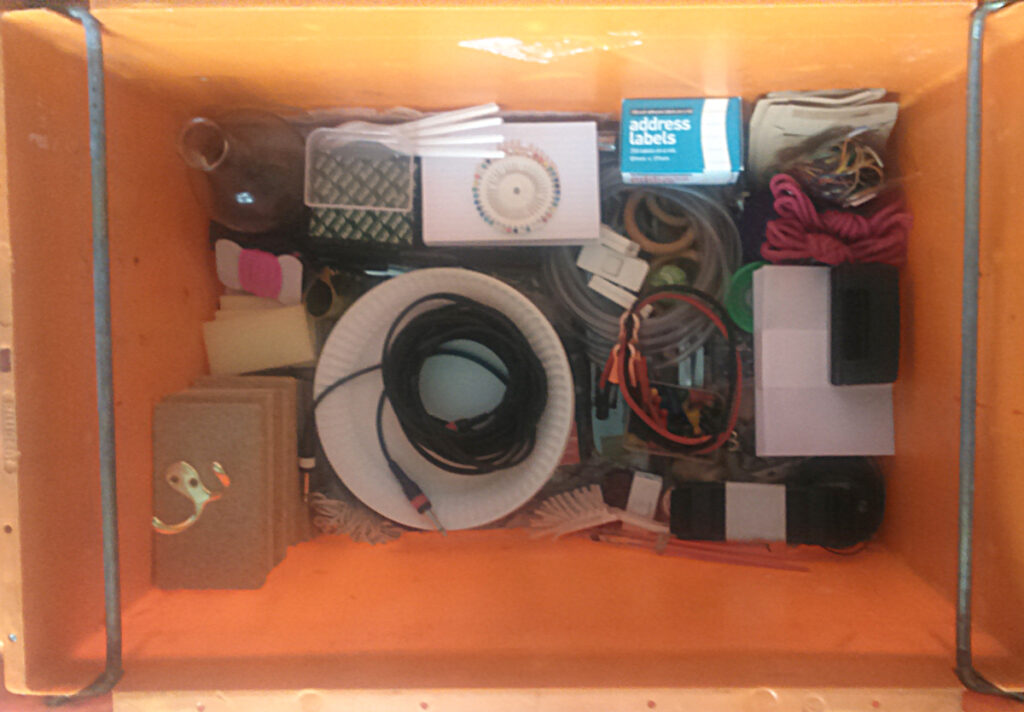
Above. Smooth Space Fluxus Box co-making event.
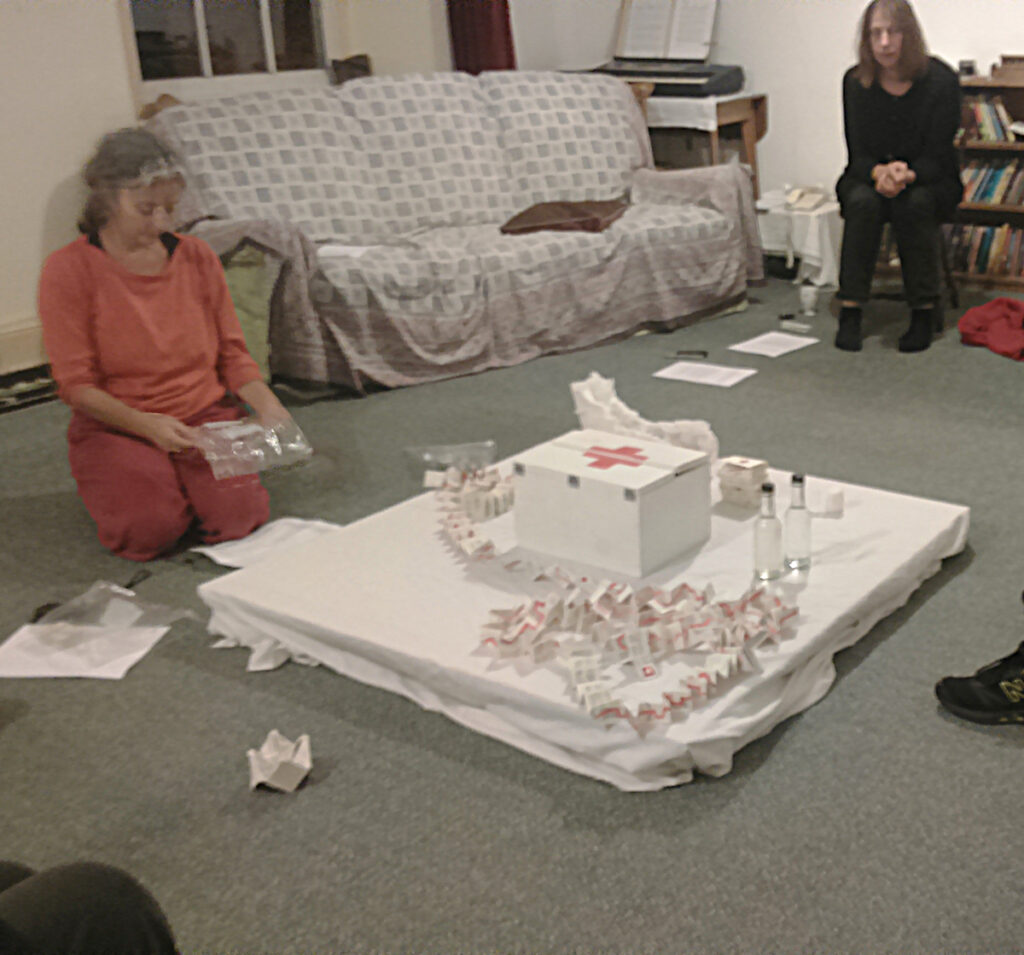
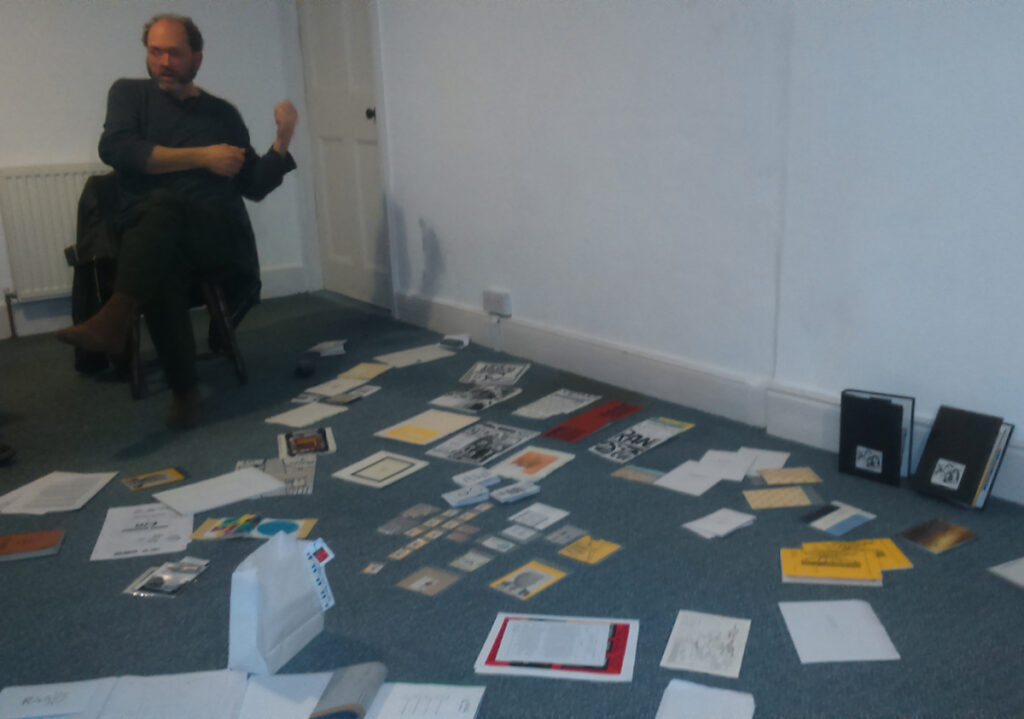
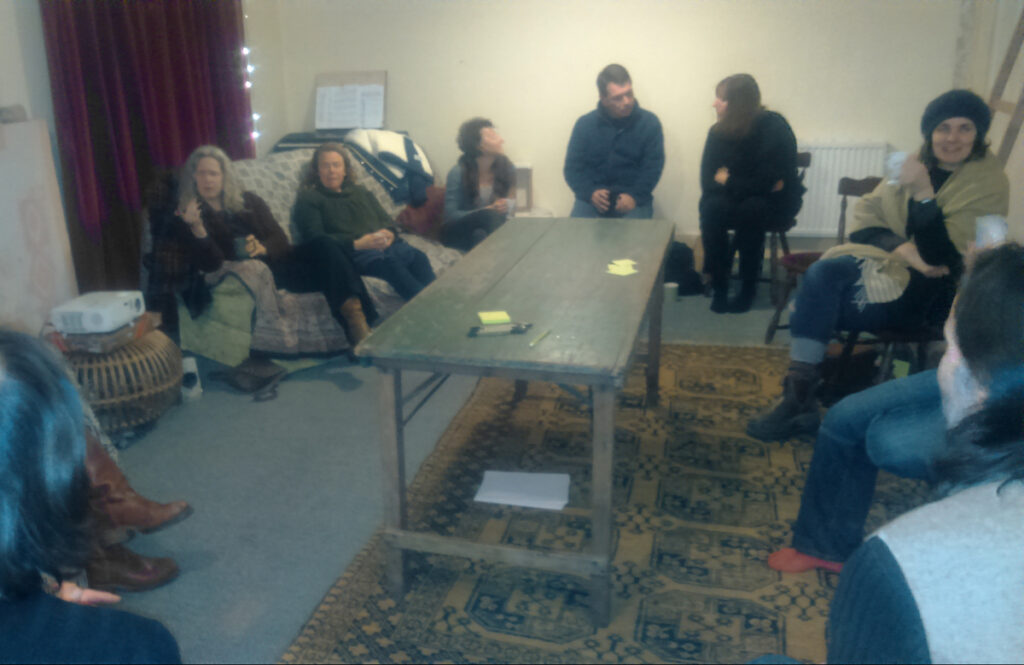
Above. Smooth Space peer review sessions. Group crit for practicing artists.
Drawing from the Kitchen
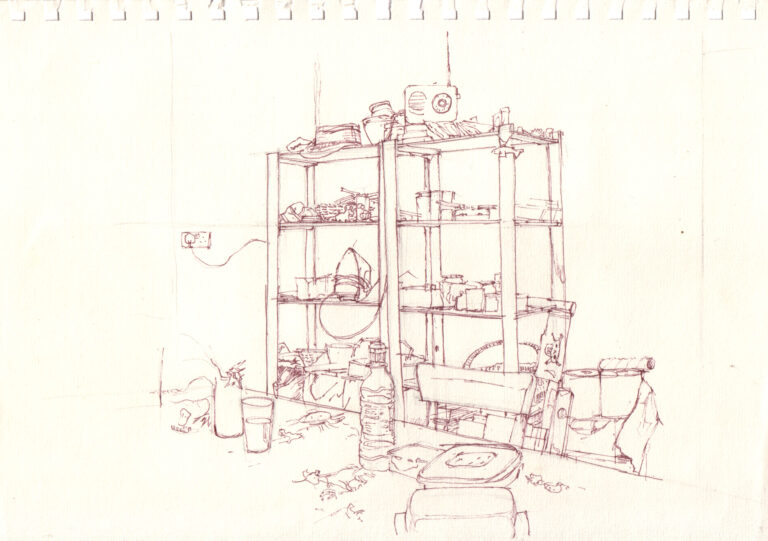
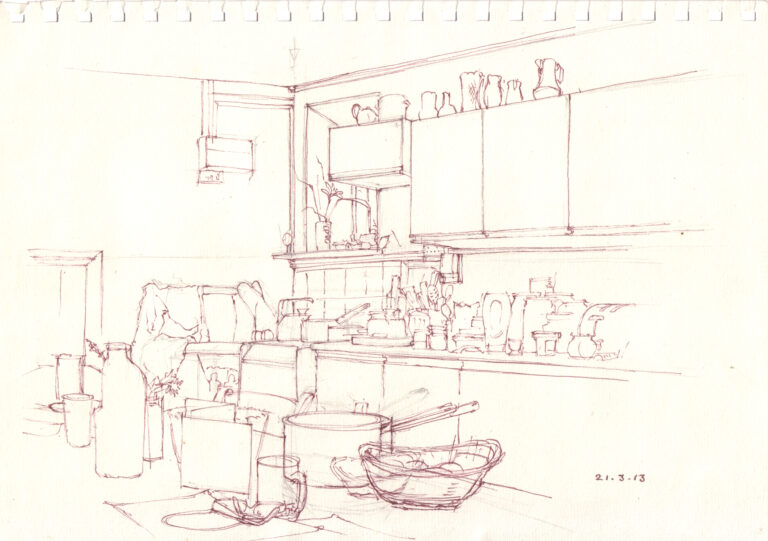
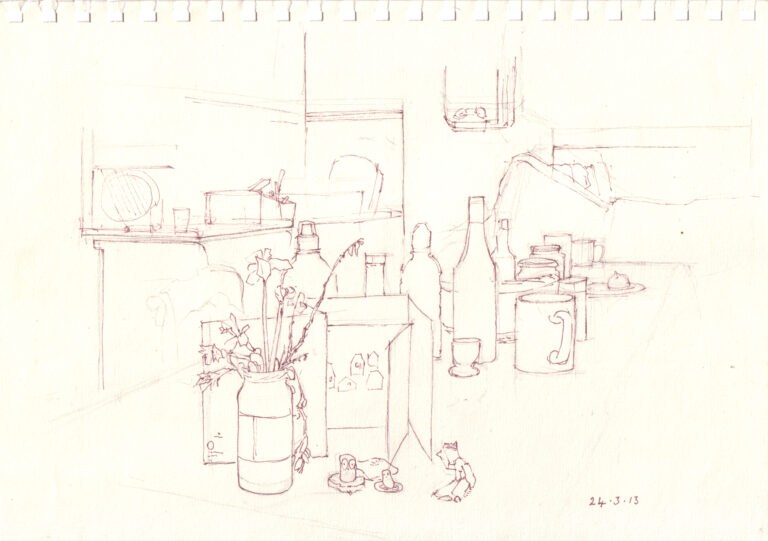

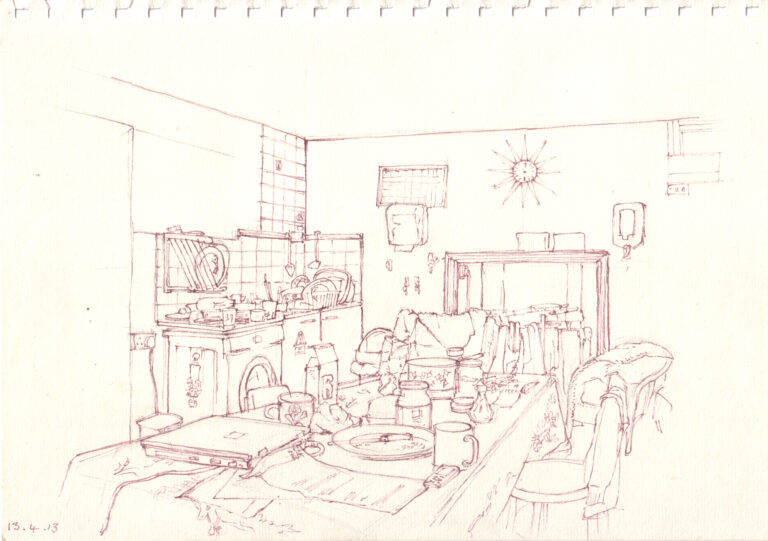
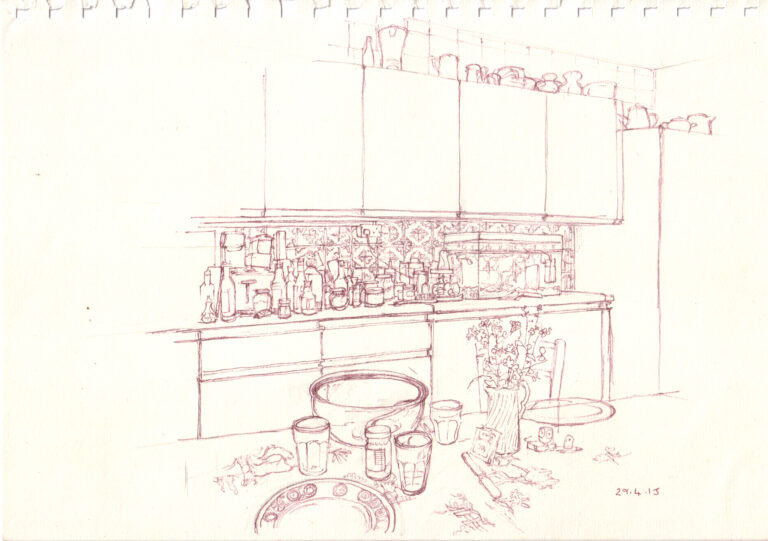
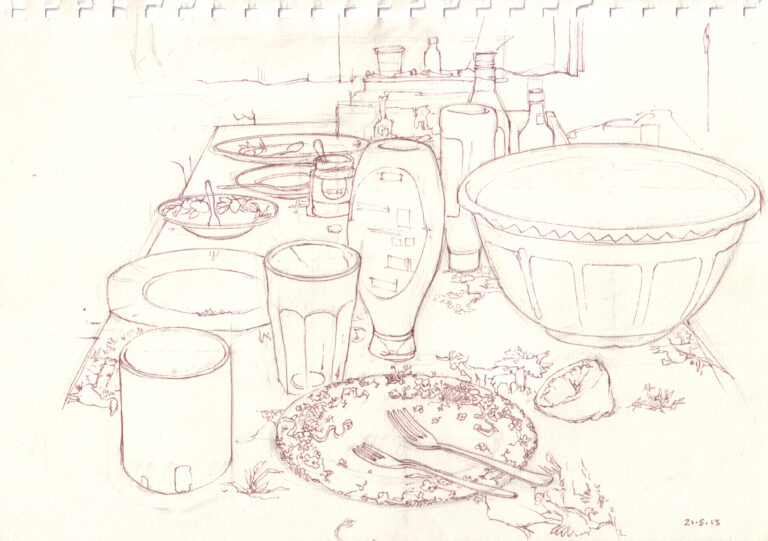
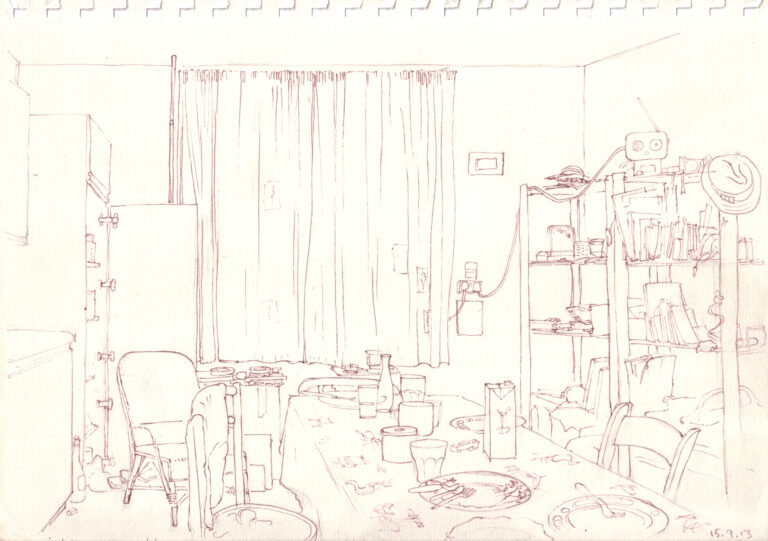
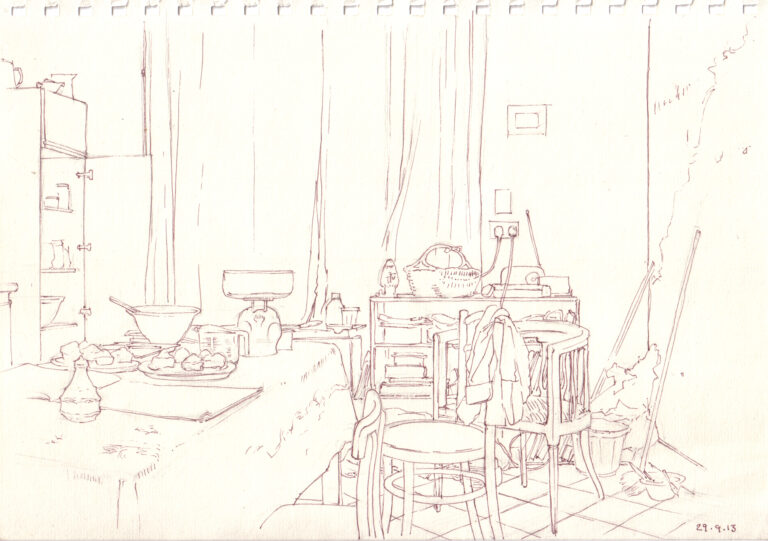
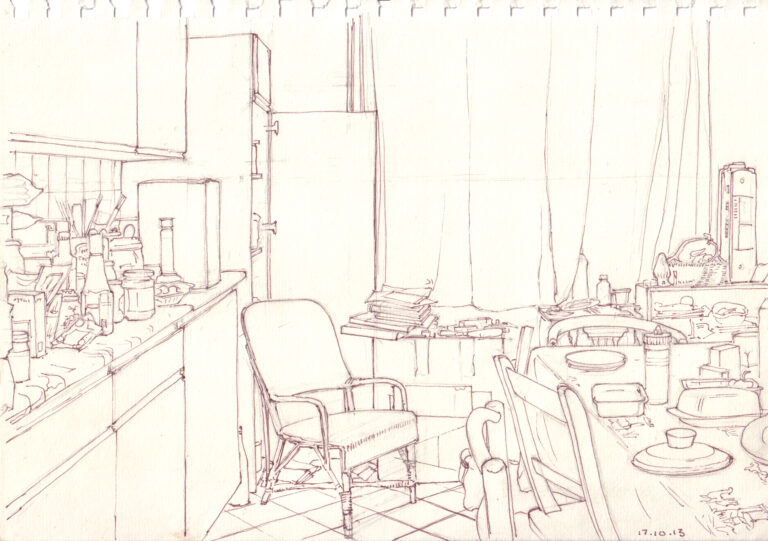

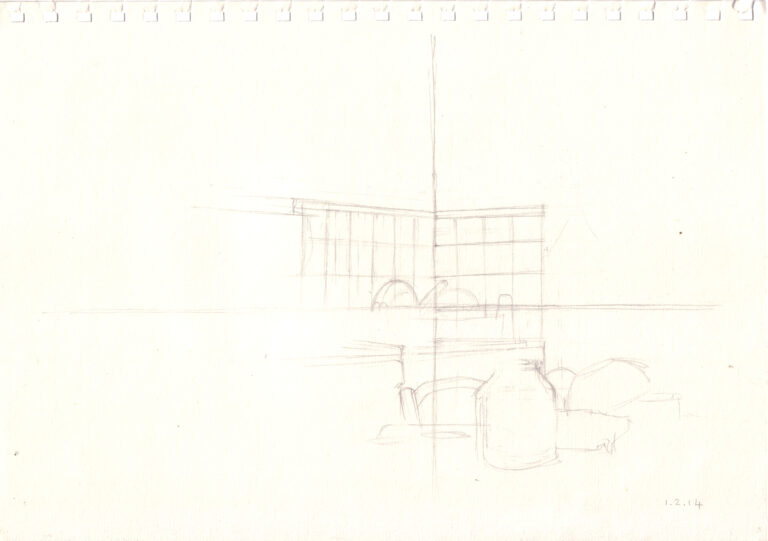

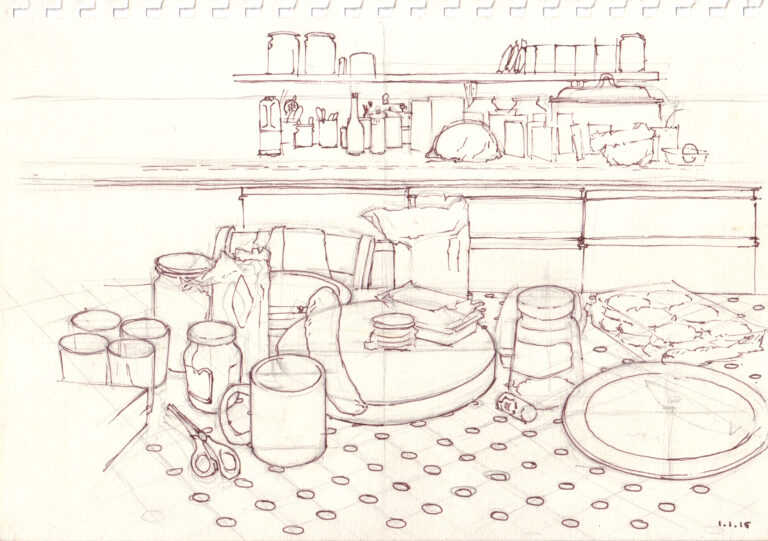
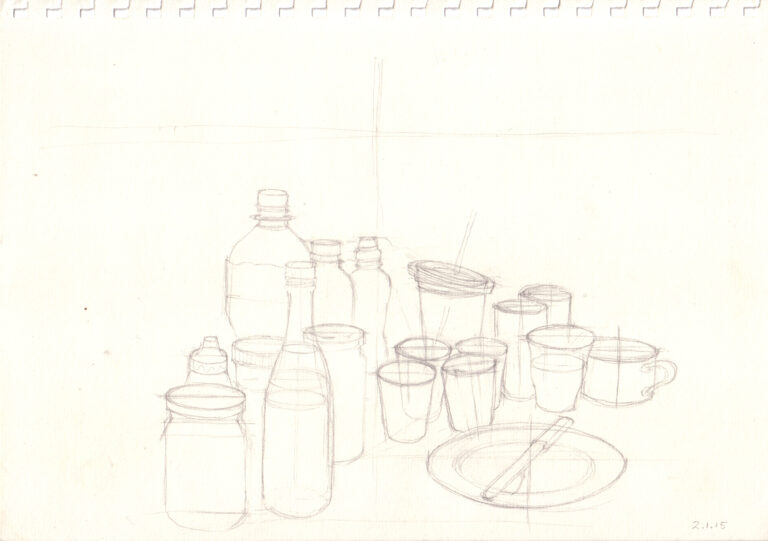
1. Family. We commonly discuss our plans with those who share our lives, whether that is washing up or moving house. Less usual is the idea that this process extends inwardly, the negotiated becomes us. Rarer still is the notion that this place has creative depth. The drawings in this show are the product of such negotiations and are conditional upon the happen-stance of the everyday lives of the artist and those ‘others’ in his life.
2. Perspective. I have used two-point linear perspective, first discovered in c1420 by Filippo Brunelleschi, one of the foremost architects and engineers of the Italian Renaissance. The impact on the graphic arts was and continues to be profound, linear perspective remains the basis for rendering three dimensional geometric objects on flat surface..
This series of drawings represents a collision between this 500 year old graphic system, and the vagaries of contemporary family life. Plastic bottles and food packaging are the fleeting evidence of the material culture of the everyday, while perspective is a timeless idea that will outlive both the artist and his children.
I hope the drawings carry the tension that I perceive between the relative cultural positions of the method and the subject.
3. Time and Sociology. In sociology a longitudinal study takes place over a period of time. The scientist will observe (i.e. collect data from) the same subject repeatedly, the same people, the same place, the same environment. Time is the key factor, in this set of drawing I have taken the same subject and observed it over a period of two years, borrowing the idea of ‘longitudinal’ from sociology and applying it to my family’s kitchen, and perhaps to myself. I have become the subject of my own sociological research. In this gesture I claim power back from the structures that define knowledge such as academe or the media.
In this sense the drawing of a kitchen is a profoundly political activity, the effect of which is to touch consciousness rather than spur some particular action.
4. Object. This show consists of pages torn from a drawing book, indicating that the collection of works are both art objects and everyday bits of paper.
I have included drawings that contain mistakes and others that retain pencil construction marks. Ensuring that the act of making remains visible and self-evidently the product of labour, not removed from this place, but part of it.
The drawings are arranged in a single block, presented in the order in which they were made; save for one, presented on an adjacent wall. Each day a different drawing, chosen at random, will occupy this space; every drawing in the series being an integral part of a two-year narrative and a complete artwork in its own right.
5. Author. What it is that singles it out drawing from other forms of representation? Perhaps ‘value’ underlies all drawn activity, both artistic and personal. The maker values the process, they may even have been trained; but most importantly the maker values the subject, s/he has given up time to the subject, drawing is an act of love which is revealed in the depiction.
This explains, in part, why drawing evokes passionate responses. It is imbued with the hidden passions of the makers which translates in to an exchange of values in which the act of looking or even the act of showing up at the gallery makes you, the audience, somehow complicit with that value, or worse, you have reflected it back to the makers, thus egging them on!
The Sea
Imagine you are standing tummy-deep in the sea, for this purpose pretend its not cold, think about what you can see, imagine the waters surface. It is not flat calm, nor is it threatening, the waves gently lift and fall, there are small sub-waves travelling across them. There you are half a bodies height above the ocean, that vast bulk of water. What you see is nothing, nothing human, no history, no culture; nor is it animal, not alive; nor is there difference between one cubic centimetre of water and the next. You are in an absolute wilderness. This experience is akin to Deluze’s ‘virtual’ which conditions or lies behind, possibilities. It is possible that any one bit of sea (how ever tiny) could relate to any other, but in themselves none do .. there is a no thing-ness within the sea .. it is down to you (active subject) to make a taxonomy of no-thing!
